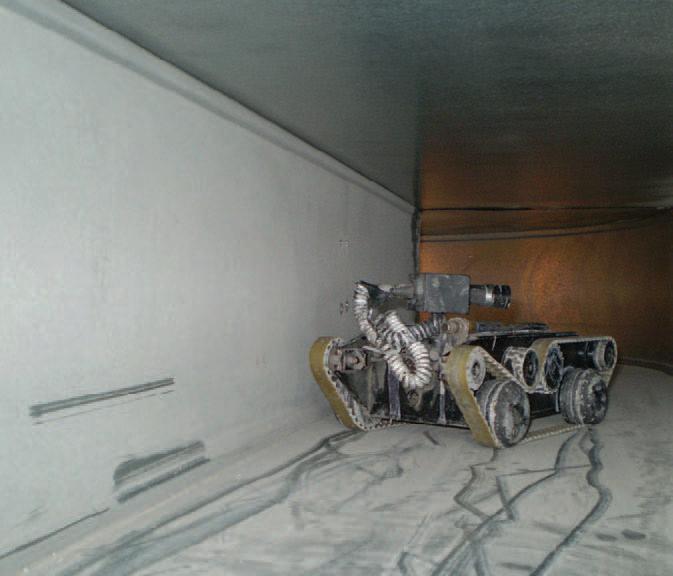JOURNAL OF CANADIAN HEALTHCARE ENGINEERING SOCIETY



Designing for future climatic impacts 2026 CHES Awards winners
CCHFM
Harnessing

2-Hour Fire-Resistive Cable System for Circuit Integrity





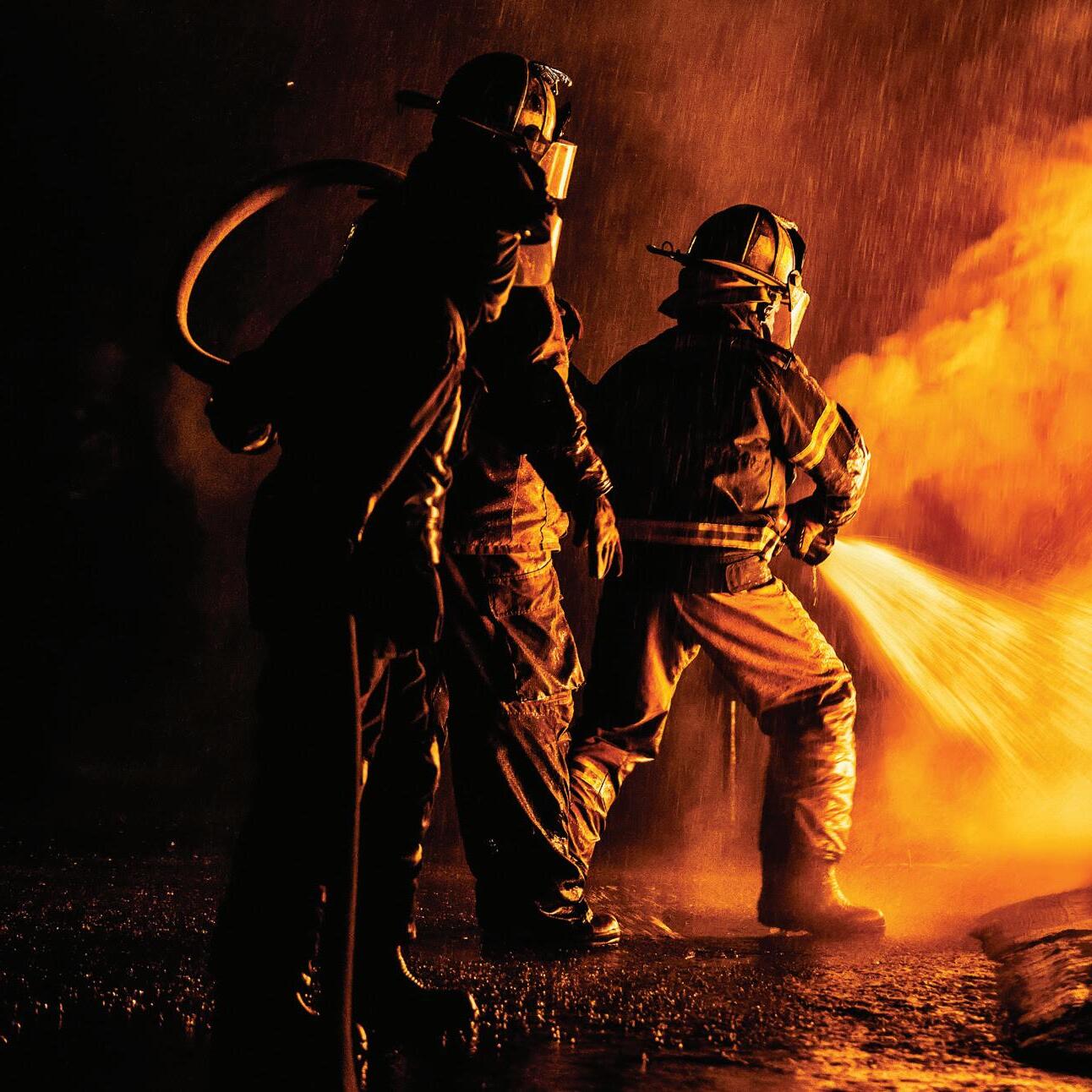

Ceramifiable silicone technology
RC90 Classified to ULC-S139 and FHIT7
Applications: Emergency Feeder Cables, Fire Pumps, Exit Lighting, Stairwell Pressurization, Ventilating Fans, Elevators / OEO
Scan to learn more about Lifeline® Fire-Resistive Cable Systems from

EDITOR/RÉDACTRICE Clare Tattersall claret@mediaedge.ca
PUBLISHER/ Jake Blanchard ÉDITEUR DU GROUPE jakeb@mediaedge.ca
PRESIDENT/PRÉSIDENT Kevin Brown kevinb@mediaedge.ca
SENIOR DESIGNER/ Annette Carlucci CONCEPTEUR annettec@mediaedge.ca GRAPHIQUE SENIOR
GRAPHIC DESIGNER/ Thuy Huynh-Guinane GRAPHISTE roxyh@mediaedge.ca
PRODUCTION Ines Louis COORDINATOR/ inesl@mediaedge.ca COORDINATEUR DE DE PRODUCTION
CIRCULATION MANAGER/ Adrian Holland DIRECTEUR DE LA circulation@mediaedge.ca DIFFUSION
CANADIAN HEALTHCARE FACILITIES IS PUBLISHED BY UNDER THE PATRONAGE OF THE CANADIAN HEALTHCARE ENGINEERING SOCIETY.
SCISS JOURNAL TRIMESTRIEL PUBLIE PAR SOUS LE PATRONAGE DE LA SOCIETE CANADIENNE D'INGENIERIE DES SERVICES DE SANTE.
CHES SCISS
PRESIDENT Kate Butler
Albright Manor
How clinical evidence in combination with national standards help hospital end-users shape better spaces
Why pursuing the CCHFM designation is worth the effort
18 Leadership in Action
Roger Holliss’s impactful service leaves lasting legacy within CHES, Canadian healthcare
20 Breakaway Dreams
CHES Maritime scores hat trick to lift chapter to total of six award wins
How decisions made today about retrofits, new construction will impact future resilience against climate change
Reproduction or adoption of articles appearing in Canadian Healthcare Facilities is authorized subject to acknowledgement of the source. Opinions expressed in articles are those of the authors and are not necessarily those of the Canadian Healthcare Engineering Society. For information or permission to quote, reprint or translate articles contained in this publication, please write or contact the editor.
Canadian Healthcare Facilities Magazine Rate
Extra Copies (members only)
Canadian Healthcare Facilities (non members)
Canadian Healthcare Facilities (non members)
$25 per issue
$30 per issue
$80 for 4 issues
A subscription to Canadian Healthcare Facilities is included in yearly CHES membership fees.
VICE-PRESIDENT Vacant
PAST PRESIDENT Craig B. Doerksen
TREASURER Reynold J. Peters
SECRETARY Paul Perschon
EXECUTIVE DIRECTOR Penny Waddington
CHAPTER CHAIRS
Newfoundland & Labrador: Colin Marsh
Maritime: Steve Smith
Ontario: Beth Hall
Quebec: Mohamed Merheb
Manitoba: Stephen R. Cumpsty
Saskatchewan: Kendall Rathgeber
Alberta: Dave Attwood British Columbia: Mitch Weimer
FOUNDING MEMBERS
H. Callan, G.S. Corbeil, J. Cyr, S.T. Morawski
CHES
4 Cataraqui St., Suite 310, Kingston, Ont. K7K 1Z7 Telephone: (613) 531-2661 Fax: (866) 303-0626 E-mail: info@ches.org www.ches.org
Canada Post Sales
Product Agreement No. 40063056 ISSN # 1486-2530
La reproduction ou l’adaptation d’articles parus dans le Journal trimestriel de la Société canadienne d’ingénierie des services de santé est autorisée à la condition que la source soit indiquée. Les opinions exprimées dans les articles sont celles des auteurs, qui ne sont pas nécessairement celles de la Société canadienne d’ingénierie des services de santé. Pour information ou permission de citer, réimprimer ou traduire des articles contenus dans la présente publication, veuillez vous adresser à la rédactrice.
Prix d’achat du Journal trimestriel
Exemplaires additionnels (membres seulement) $25 par numéro
Journal trimestriel (non-membres) $30 par numéro
Journal trimestriel (non-membres) $80 pour quatre numéros
L’abonnement au Journal trimestriel est inclus dans la cotisation annuelle de la SCISS.

MY DAD CELEBRATED HIS 80th birthday this past June; my mom marked the same occasion in April of last year. While mentally spry, though perhaps my mom less so since a recent fall, they’re slowing down physically. And, unsurprisingly, they have health issues that come with aging. Right now, they’re comfortable in their own home; however, with time, it’s possible either or both may need to move to some sort of care facility in the future.
The demand for long-term care in this country continues to grow. By 2030, one in four Canadians will be age 65 or older, according to Statistics Canada, and long-term care requirements will rise to 606,000 patients from 380,000.
There are roughly 2,076 of these types of facilities in Canada — 46 per cent publicly owned and the other 54 per cent privately run. Of these is Albright Manor, a 232-bed long-term care home in Beamsville, Ont., licensed by the Ontario Ministry of Health and Long-term Care with private, semi-private and basic accommodation. On the eve of its 60th anniversary, the 1966-built facility was honoured with this year’s Wayne McLellan Award of Excellence in Healthcare Facilities Management at the 2026 CHES National Conference in Calgary.
Also celebrated at the awards ceremony was Roger Holliss and the Maritime chapter, receiving the Hans Burgers Award for Outstanding Contribution to Healthcare Engineering and President’s Award, respectively. You can read about all three recipients in the special section dedicated to the annual CHES Awards.
We then turn our attention to facility management and design. Topics covered include the benefits of data collection in assisted living facilities; how clinical evidence in combination with national standards help hospital end-users shape better spaces; and why pursuing the Canadian Certified Healthcare Facility Manager designation is worth the effort.
Rounding out this issue is a focus on sustainable healthcare. Cory Boulet of SMP Engineering dives into the challenges healthcare facilities may face when contemplating installation of a solar photovoltaic system on their building. Then, Jean-Guy Levaque of Pretium Engineering addresses the impact decisions made today about roof retrofits and new construction will have on future resilience against climate change.
Clare Tattersall claret@mediaedge.ca

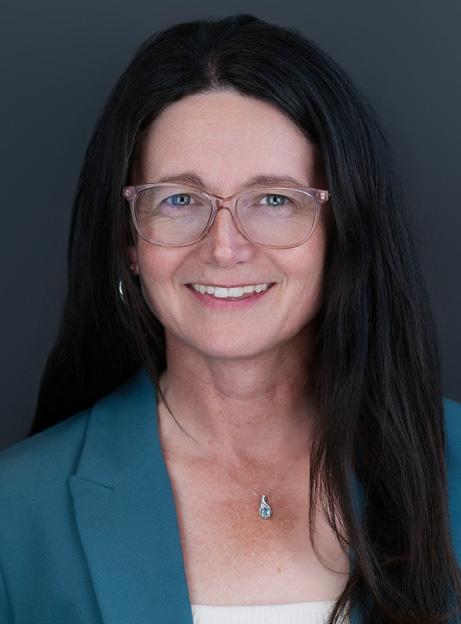

THE 2025 CHES NATIONAL CONFERENCE in Calgary was truly one for the record books, with almost 1,000 attendees coming together to learn, connect and celebrate healthcare facilities and engineering. This kind of success only happens because of teamwork. I want to extend my sincere thanks to the Alberta chapter and James Prince (now past chair), as well as to the national conference planning committee under the leadership of Paul Perschon, who also serves as CHES National secretary. Together, you set the stage for a memorable event, including a once in a lifetime highlight of meeting hockey legend Lanny McDonald.
Ahead of the conference, the CHES National executive, board and committee chairs gathered for two full days of discussion, setting goals and objectives for the year ahead aligned with our strategic plan, and reviewing bylaws and policies. These conversations are helping us move CHES forward with clarity and purpose, ensuring we continue to meet the evolving needs of our members.
So far this fall, I’ve attended the Saskatchewan chapter conference, while Paul represented CHES National at the Newfoundland and Labrador chapter conference. Both events offered opportunities to chat with members, hear perspectives and learn more about how CHES can continue to support you.
I hope everyone took time to celebrate themself and their teams during National Healthcare Facilities and Engineering Week. I want to express my deep appreciation for all you do. The work in healthcare facilities is vital to patient care.
Nominations are open for CHES National vice-president. This is an important leadership opportunity for regular members who meet the experience criteria to step forward. The successful candidate will become vice-president immediately and then become president at the fall 2028 annual general meeting (AGM). I encourage you to review the details carefully and think about how your leadership journey could contribute to CHES’s future. The call for nominations for secretary and treasurer to serve from the 2026 AGM to that in 2028 will take place early next year, so stay tuned.
Finally, don’t forget to take advantage of the remaining webinar of 2025, which is free for all CHES members. And while you’re on the CHES website, check out the lineup of CSA medical gas courses and the Canadian Healthcare Construction Course, both excellent opportunities to build your knowledge and skills. To keep up on all things CHES, be sure to follow our LinkedIn page for the latest updates and highlights.
Kate Butler CHES National president
• Who can sponsor? Organizations or companies.
• Apply online: www.ches.org/ches-young-professional-grant-sponsorship-application-form
• Cost: $2,500+tax
CALL FOR CANDIDATES
Eligibility criteria:
• Work full-time within a healthcare organization or a company supplying technical services to healthcare facilities or organizations.
• Be or will become an architect, engineer (ie. mechanical, electrical, power, civil, etc.), technician or work in a similar technical discipline.
• Have worked in the healthcare field for less than five (5) years, or have been a professional architect, engineer, technician or worked in similar technical discipline for not more than ten (10) years.
Application requirements:
• Complete the YPG Candidate Application Form on the CHES website: www.ches.org/young-professional-grantypg-application-form
• Submission must include a letter of endorsement of the nominee from the local CHES chapter.
What’s in it for the recipient?
• Level up your knowledge and plenty of networking. Complimentary registration for the CHES National Conference and reimbursement for travel costs (local transport, flights, accommodations and meals) for the successful candidate(s), up to a maximum of $2,500, with amounts above this value being the responsibility of the successful candidate(s). Reimbursement shall be in accordance with CHES policy B5.1.
• Recognition! The successful candidate(s) will agree to participate in the making of a short video interview at the CHES National Conference to share their experience while attending. An announcement will be made at the CHES National Conference recognizing the YPG recipient.
• Complimentary CHES membership for the successful candidate for one (1) year following the conference.
Full details about the YPG can be found on the CHES website at www.ches.org under the National page.
If you have any questions, e-mail us at info@ches.org.
Newfoundland and Labrador will host the 2026 CHES National Conference in St. John’s. Canada’s easternmost province is rich in heritage, culture and natural wonder — dramatic coastlines, rugged cliffs and endless water views. Whether an adventurer, foodie, history buff or simply someone looking to slow down and breathe in some salty ocean air, you’ll find your rhythm here. Newfoundland and Labrador isn’t just a place — it’s a feeling. And once you’ve felt it, you’ll never forget it.
It has been a busy year for the chapter as we simultaneously prepared for our annual conference, Oct. 26-27, continued planning for the 2026 CHES National Conference, and prepped for our trip to this year’s national conference in Calgary. The 2025 CHES National Conference provided a valuable opportunity to promote the 2026 event. As a chapter executive, we voted to send our entire team to Calgary, to strengthen our presence.
Locally, we have expanded our conference by moving to a larger venue that can accommodate more vendors and attendees. The growth provides healthcare professionals greater access to cutting-edge products and innovations. While increased attendance brings higher hosting costs, it also enhances the overall impact and reach of our event.
Chapter membership experienced significant growth last year, driven largely by new members from our provincial capital planning and engineering group. Building on this momentum, the chapter is actively promoting recruitment efforts among vendors, suppliers, consultants and other healthcare stakeholders to further expand our membership base. We have seen a noticeable increase in inquiries from both members and vendors this year, reflecting increased interest and engagement within our community.
Planning has begun for the B.C. chapter’s 2026 spring conference in Whistler, May 31-June 2. Due to the timing of the 2026 FIFA World Cup, there’s the possibility we’ll be competing with visitors for hotel rooms. We’ve secured extra rooms at the Aava and Pan Pacific hotels at guaranteed rates, so book early to avoid escalating prices.
Next year’s event follows an incredibly successful 2025 conference. Held in Penticton, around the theme Beyond Bricks and Mortar, the educational program earned rave reviews from conference attendees. It brought together more than 700 leaders in healthcare engineering, construction, facility management and other fields to discuss the holistic role that modern healthcare facilities play. Sessions covered pressing issues like energy efficiency, carbon reduction, digital integration, patient-centred design and trends in healthcare. Participants explored emerging technologies, best practices and advanced energy solutions that drive operational efficiencies while fostering healthier, more sustainable spaces for patients and staff alike.
CHES B.C. ran a contest to help send regular chapter members to the 2025 CHES National Conference in Calgary. Up to $1,750 was offered to assist winners in attending. We received many applications and were able to support nine winners.
2026 is an election year for the B.C. chapter executive. A call for nominations will soon be issued. This election will be run by CHES National, so please keep your eye out for a communication e-mail from the national office.
The B.C. chapter will once again host the Canadian Healthcare Construction Course in November.
As required by the province’s Societies Act, the B.C. chapter has completed the process of incorporation.
—Mitch Weimer, British Columbia chapter chair

The Ontario chapter held elections in spring. There was notable competition for executive positions, indicating keen interest in the chapter’s future. As a result, the chapter executive is reviewing the terms of reference and putting forward a recommendation for a few members-at-large to join the Ontario committee. This will support both recruitment and retention as well as succession planning for the executive as a number of individuals will be potentially retiring in the coming years. We currently have three people who are interested in filling these spots. We also have a vacancy for our professional development representative that we are actively recruiting to fill.
The new chapter executive — myself (chair), Chris Mackey (vice-chair), Daniel Neaves (secretary), Rudy Dahdal (treasurer) and John Marshman (past-chair) — has held a few meetings since the elections. As part of our membership recruitment, the team has divided the list of all Ontario hospitals that currently do not have a CHES member, and is committed to calling every single healthcare facility. Jeff Weir put together the list and script. Our committee spent the summer months making phone calls to increase awareness of CHES and recruit new members.
The Ontario chapter was asked to do a brief presentation at Infection Prevention and Control Canada’s conference in early September, to highlight the benefits of CHES membership to their delegates.
Our focus for the next few years includes strategies to engage current members while attracting new ones, and fostering a vibrant community dedicated to healthcare engineering excellence. This momentum will lead to innovative programs, networking opportunities and professional development resources that benefit all members.
The Manitoba chapter sponsored an award at Red River College Polytechnic’s construction trades awards for power engineering students. The recipient was Haki Osmani. Presented June 4, the awards ceremony was attended by myself and vice-chair Kevin Schmon.
CHES Manitoba’s 2026 spring education day has been scheduled for May 14, at the Victoria Inn in Winnipeg. Preparations for the event will start in the coming weeks. At this time, there is no planned theme or topics for presentations.
The chapter once again partnered with the Building Owners and Managers Association of Manitoba for its annual building conference in Winnipeg. We provided a presentation at the event, Oct. 21. The presentation and keynote speaker luncheon were provided to chapter members at no charge.
The Winnipeg Construction Association hosted the Canadian Healthcare Construction Course Nov. 4-5.
The Manitoba chapter has seen growth over the past year, with 27 new members for a total of 141.
—Stephen R. Cumpsty, Manitoba chapter chair
Planning is well underway for the Maritime chapter’s fall education day, Nov. 25, at the Glengarry Best Western in Truro, N.S., as well as next year’s spring conference. The 2026 event will be held May 3-5, in Moncton, N.B.
The Maritime chapter hosted the Canadian Healthcare Construction Course in Halifax, Oct. 22-23.
Although CHES Maritime has a strong membership base in Nova Scotia and New Brunswick (around 280 members), we notably lack membership and leadership from Prince Edward Island. The chapter executive is actively seeking members and executive representation from P.E.I.
The Maritime chapter is developing an award to recognize outstanding achievement and performance in the healthcare facilities management profession by a CHES Maritime member.
The chapter continues to offer several financial incentives to our members, such as the Per Paasche bursary, contribution to Canadian Certified Healthcare Facility Manager exam fees, and spring and fall education days, among other membership benefits.
—Steve Smith, Maritime chapter chair
The Saskatchewan chapter has been busy planning our 2025 conference and trade show, which took place Oct. 19-21, at TCU Place in Saskatoon. We secured many exciting speakers to present on a range of topics, including northern hospital evacuations, Legionella prevention, harnessing artificial intelligence in facilities, remote healthcare in rural facilities, and a virtual health hub. We received vendor and delegate registrations leading up to the event.
CHES Saskatchewan continues to try to grow our chapter. We sought nominations for additional board members at this year’s annual general meeting.
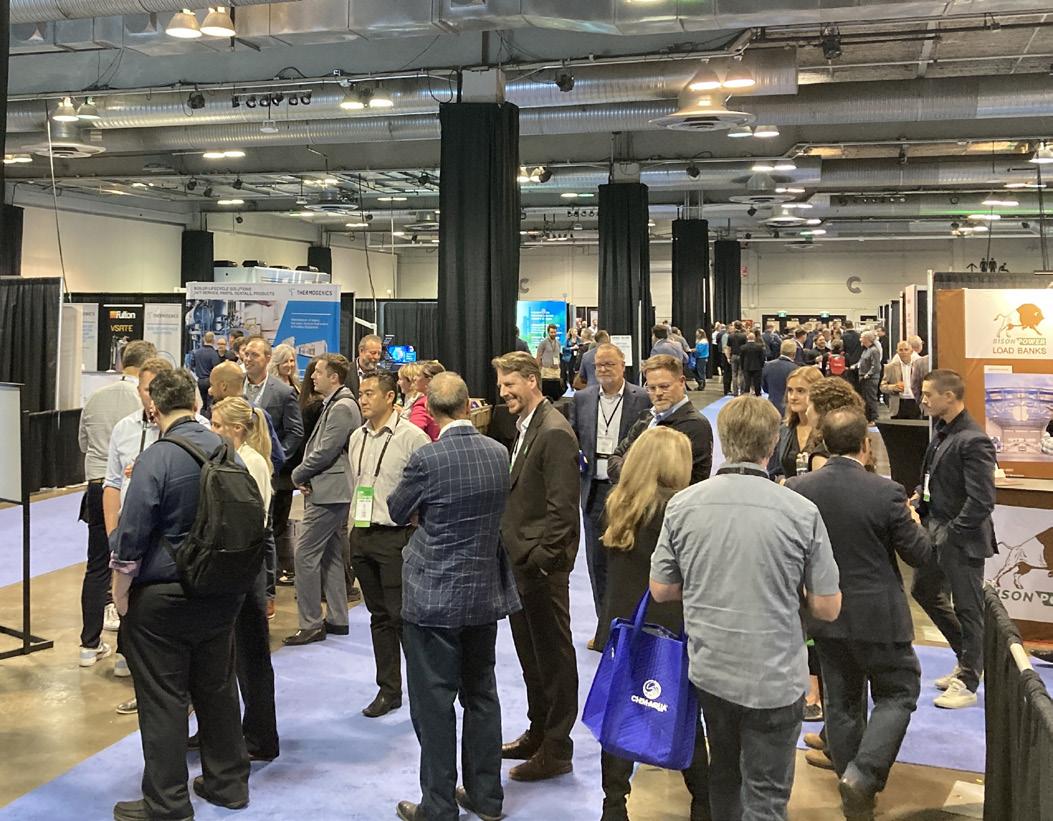
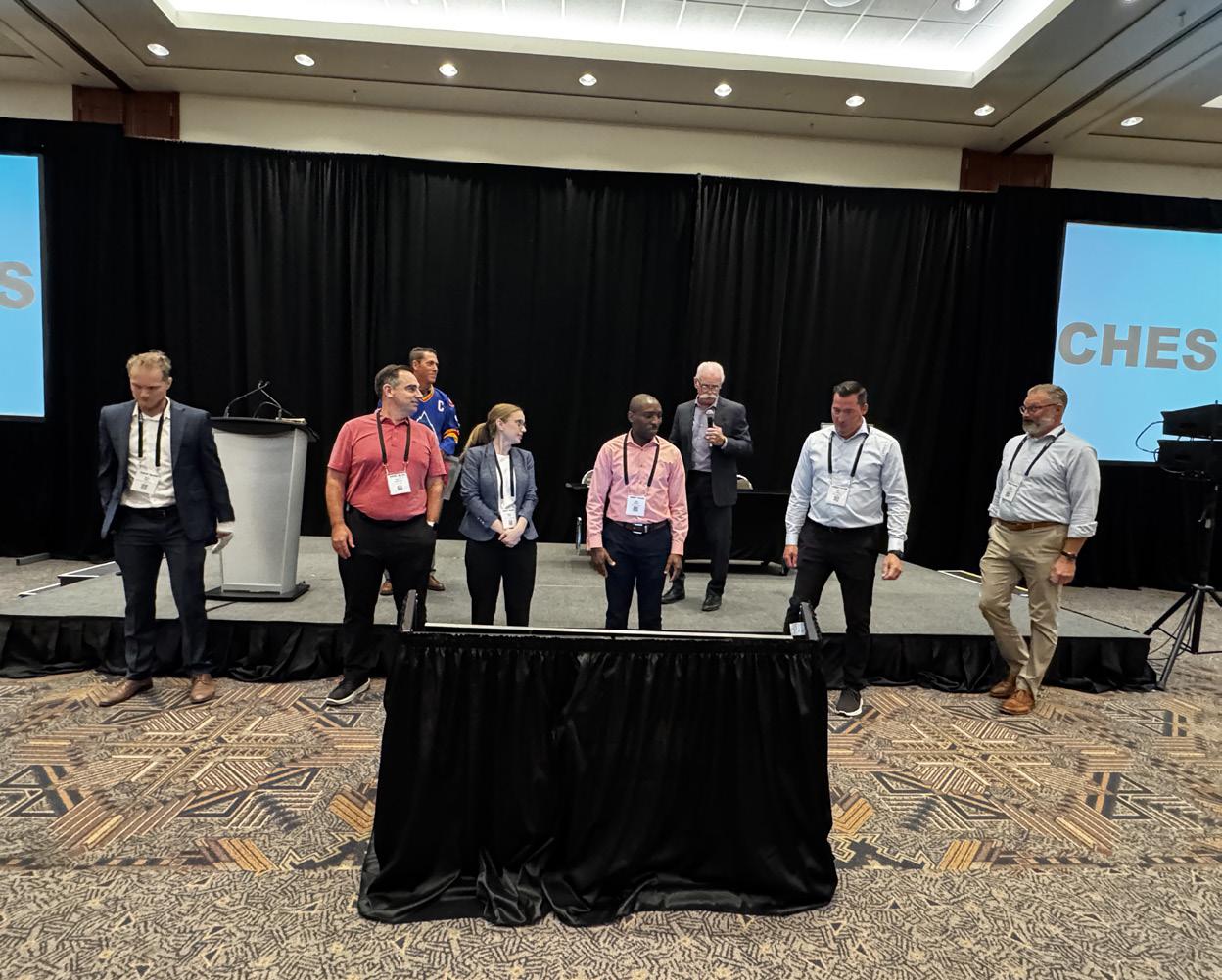
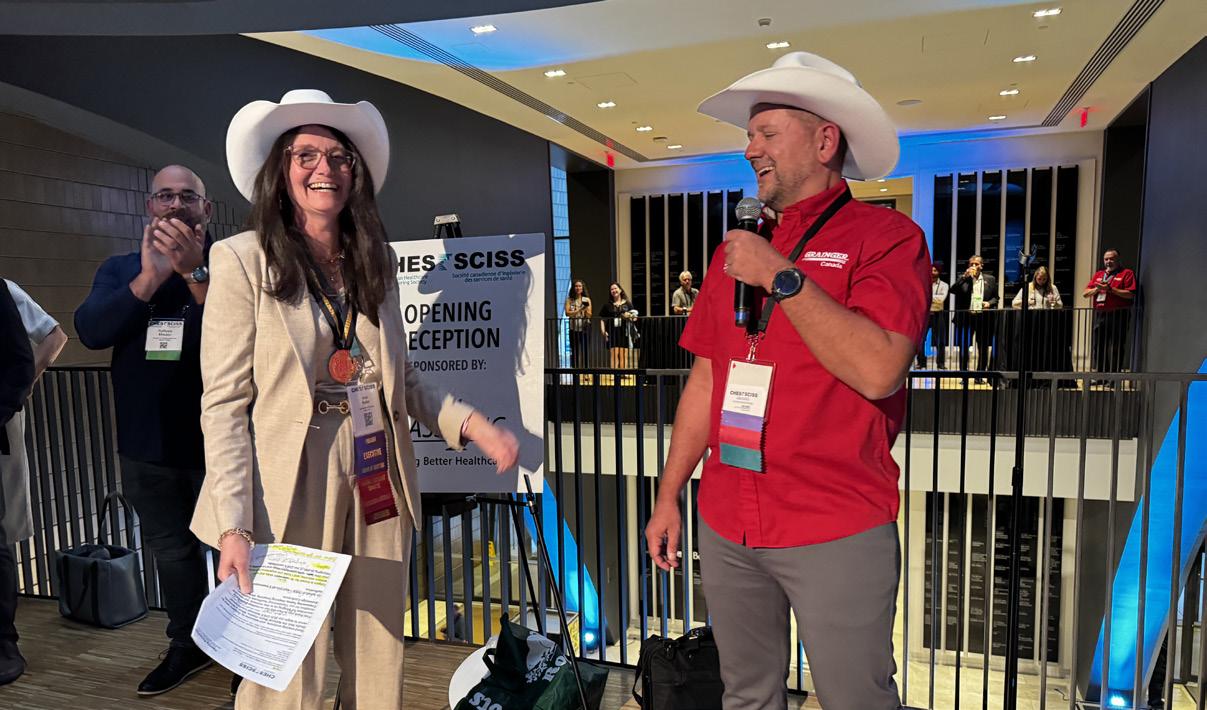
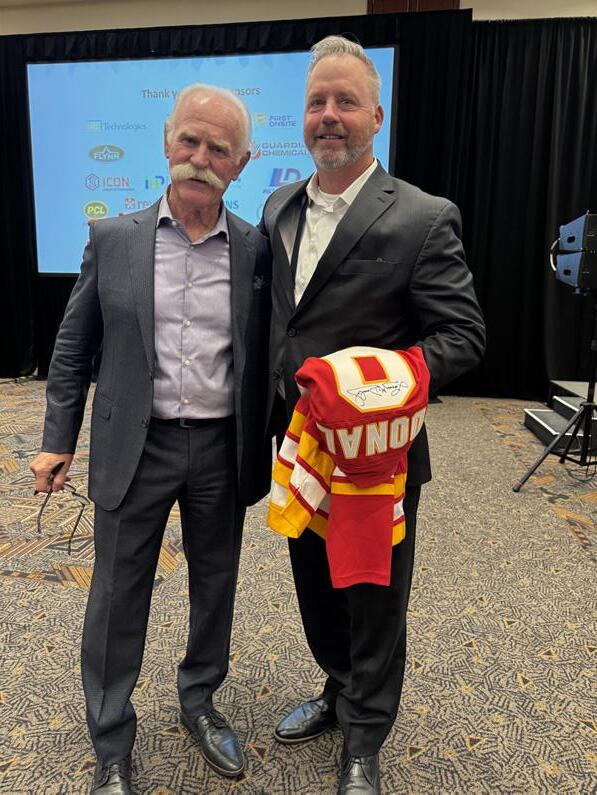
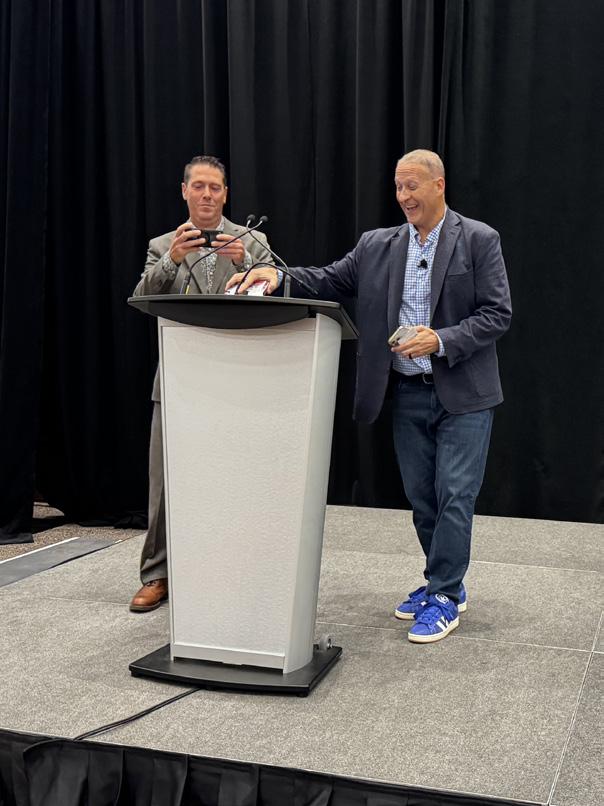
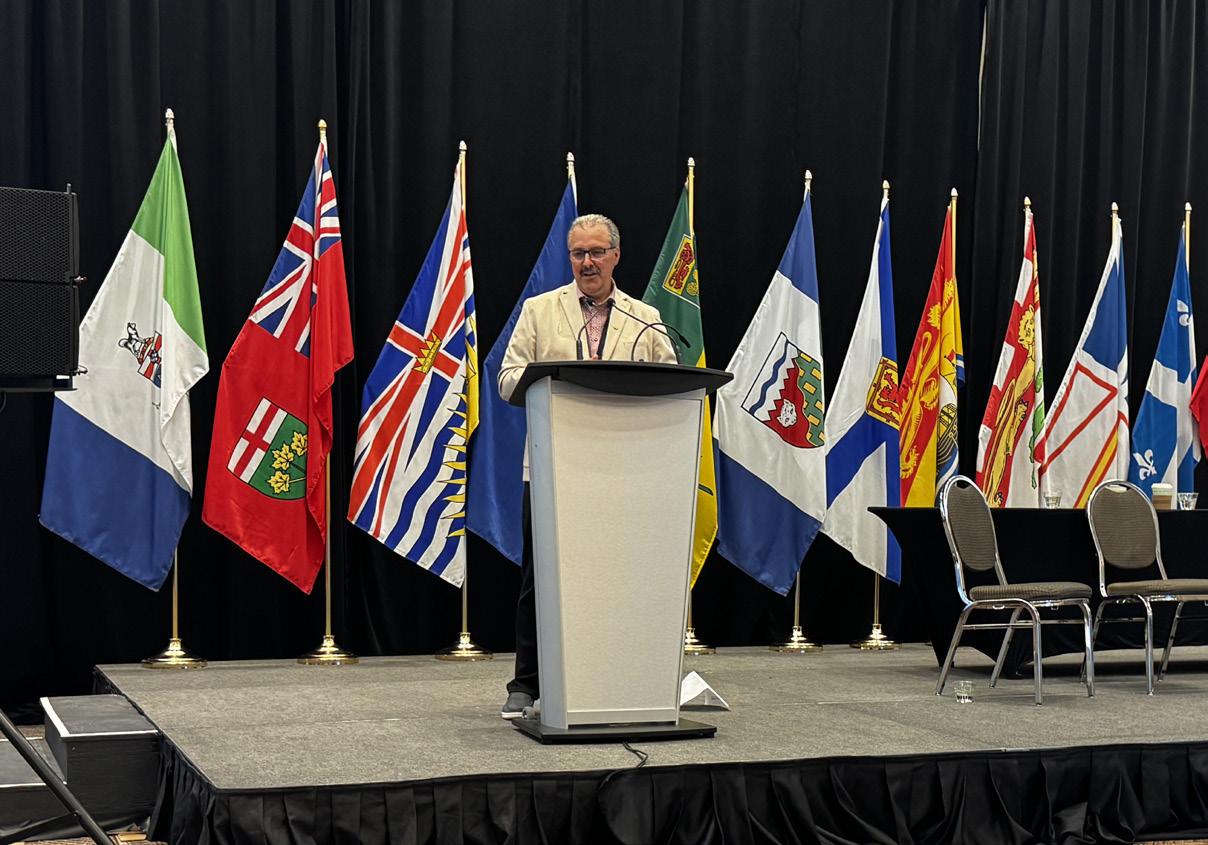
IT’S NO SECRET THAT Alberta’s population is booming and Calgary is among the fastest-growing cities, making it the third largest in the country. Recent statistics show its population in 2024 was up 6.14 per cent year-over-year to roughly 1.6 million — well beyond what was originally forecasted — and it has increased 18 per cent since 2019. If the city keeps growing the way it has, it could surpass two million residents before the turn of the next decade.
This rapid growth, along with an aging population, is putting enormous pressure on Calgary’s healthcare facilities, resulting in longer wait times for services, a rise in ‘hallway medicine’ and higher burnout rates among healthcare workers. Yet, lack of access to a family doctor, overwhelmed emergency rooms and staff under incredible strain is not unique to the city. Serving as a microcosm of a predicament affecting the entire country, Calgary was a fitting backdrop for the 2025 CHES National Conference, whose theme — Transforming Healthcare Together: Empowering Teams, Inspiring Creativity, Unleashing Knowledge — emphasized the need for a collaborative approach to solve similar challenges
plaguing hospitals in every province and territory.
Held Sept. 14-16, at BMO Centre, the conference drew nearly 1,000 attendees, including all delegates, and sponsor and exhibitor personnel. The trade show was fully sold-out with 140 exhibitors that had secured their booth spots by May of this year. This component of the conference was a highlight for the 2025 Young Professionals Grant (YPG) recipient, Nathaniel Schrader, whose trip was sponsored by CHES Maritime. He says it offered notable networking opportunities with exhibitors like Trane and the International Association of Heat and Frost Insulators and Allied Workers.
“They provided opportunities to learn about new products, technologies or approaches to key concepts in energy efficiency at healthcare facilities,” says Schrader, an energy manager with the department of health and wellness at EfficiencyOne in Dartmouth, N.S. “These two-way discussions offered an outlet to dig deeper and develop an understanding for what’s possible through collaboration in future projects.”


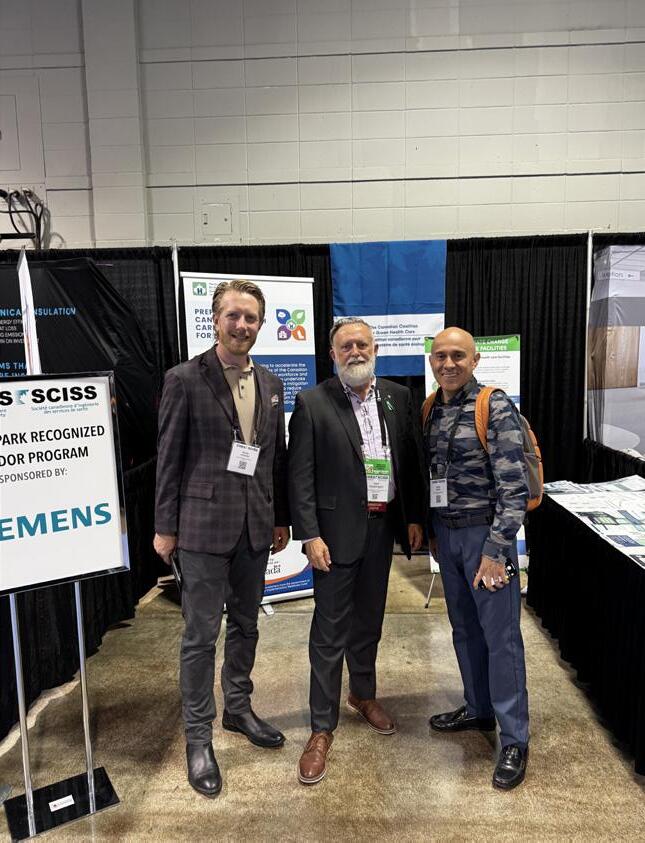


Each year, the YPG is given to a young professional who is or will become an architect, engineer or technician, or work in a similar technical discipline. Eligible candidates must be employed by a healthcare organization, or a company that supplies goods or services to healthcare facilities or organizations, and have worked in the healthcare field for less than five years. The grant includes the opportunity to attend the CHES national conference, with registration fees and travel expenses paid up to $2,500, and a oneyear complimentary CHES membership.
Schrader says he was surprised and deeply honoured when notified he was the recipient of this year’s grant.
“I felt a genuine excitement at the opportunity to engage more fully with the CHES community at the national level, to learn from industry leaders, and to contribute my own perspectives and localized challenges as an emerging professional,” says Schrader, who previously worked as an energy manager with Nova Scotia Health, a position he held for three years. “Above all, I’m grateful for the support this grant provides in helping me grow my expertise and
continue working toward advancing safe, efficient and sustainable healthcare facilities.”
The educational seminars were also a big draw for Schrader, who attended all eight tracks. Two days of concurrent sessions kicked off Sept. 15, with the keynote address by Ross Bernstein, a bestselling author of nearly 50 sports books and award-winning peak performance business speaker. His presentation was about the DNA of what makes championship teams in sports so unique and how that relates to business, something he has studied for the better part of the past 25 years. Bernstein was immediately followed by hockey legend and Calgary native Lanny McDonald, who ended his NHL career with the Flames franchise at the end of the 1988/1989 season, after winning the Stanley Cup — the first championship in the club’s history and his 16 years on the ice. McDonald gave a motivational speech on teamwork and his experience with Alberta Health Services. Last year, the Hall of Famer spent two weeks at Calgary’s Foothills Medical Centre following a cardiac event at the city’s airport whilst returning from the NHL’s All-Star Game in Toronto.

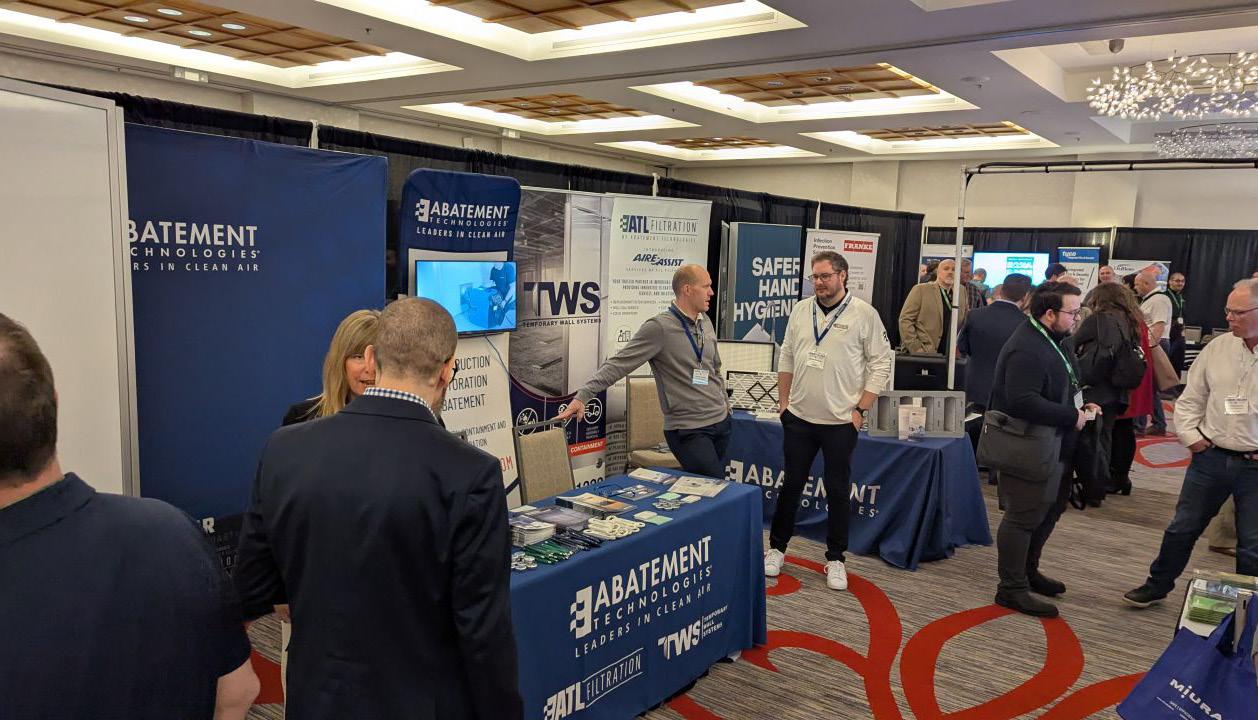


The day closed with the president’s reception and gala banquet, with entertainment provided by the Dueling Piano Kings. The pinnacle of the event was the presentation of awards. Long-term care facility Albright Manor in Beamsville, Ont., (Wayne McLellan Award of Excellence in Healthcare Facilities Management) and Roger Holliss (Hans Burgers Award for Outstanding Contribution to Healthcare Engineering) were honoured, along with CHES Maritime (President’s Award), the second chapter to win three consecutive times to achieve a hat trick.
In addition to the ample educational opportunities offered both on and off the trade show floor, thanks, in part, to the 59 sponsors that supported the 2025 event, the conference included a robust social program. Per usual, Day 1 began with the annual Great CHES Golf Game, held this year at the Kananaskis Country Golf Course west of Calgary, in the foothills and front ranges of the Canadian Rockies. Also that day was the inaugural Women in CHES brunch at the Marriott hotel in downtown Calgary, attended by 60 participants; facility tours of South Health Campus
and the Arthur J.E. Child Comprehensive Cancer Centre, one of the largest cancer centres in the world; and the opening night reception at Studio Bell, home of the National Music Centre, that was enjoyed by more than 400 attendees, including Schrader.
Reflecting on CHES’s biggest annual event, he says it is more than just a conference — it’s an experience.
“The learning and networking opportunities were plentiful, which helped to support my professional development and growth in ways that are not traditionally experienced in my day-to-day work environments,” explains Schrader. “There’s also an element of personal development that’s experienced in seeking discomfort, travelling across the country to a new city and exploring what it has to offer.”
Next year, the conference is in St. John’s, Nfld., closer to where Schrader lives and works on the east coast. When asked if he plans to attend, his response is a resounding “absolutely.”
“Engaging with future conferences will be a great avenue for furthering my development along my professional journey.”
Nomination Deadline: April 30, 2026
Nominations are now open for both the Wayne McLellan and Hans Burgers awards. This is your opportunity to recognize outstanding teams or individuals who have made significant contributions in the healthcare facility industry.
Recognizes demonstrated leadership excellence by CHES members in a Canadian healthcare facility. The award may be granted annually to a healthcare organization that is judged to have the highest met criteria established for the award.
How to Nominate: Submit your nomination by completing the online form at www.ches.org/award/wayne-mclellan-award-ofexcellence-in-healthcare-facilities-management/

Why Nominate?
• Recognizing excellence inspires others and strengthens our community.
• Help us celebrate those who go above and beyond. Let's honour the best among us!
Recognizes an outstanding contribution to healthcare engineering by a CHES member. The award may be granted annually to a CHES member who is judged to have the highest met criteria established for the award.
How to Nominate: Submit your nomination by completing the online form at www.ches.org/award/hans-burgers-award-foroutstanding-contribution-to-healthcare-engineering
Award sponsored byededdrgrfgrfgrfgrggedge
Full awards details can be found on the CHES website at www.ches.org under the
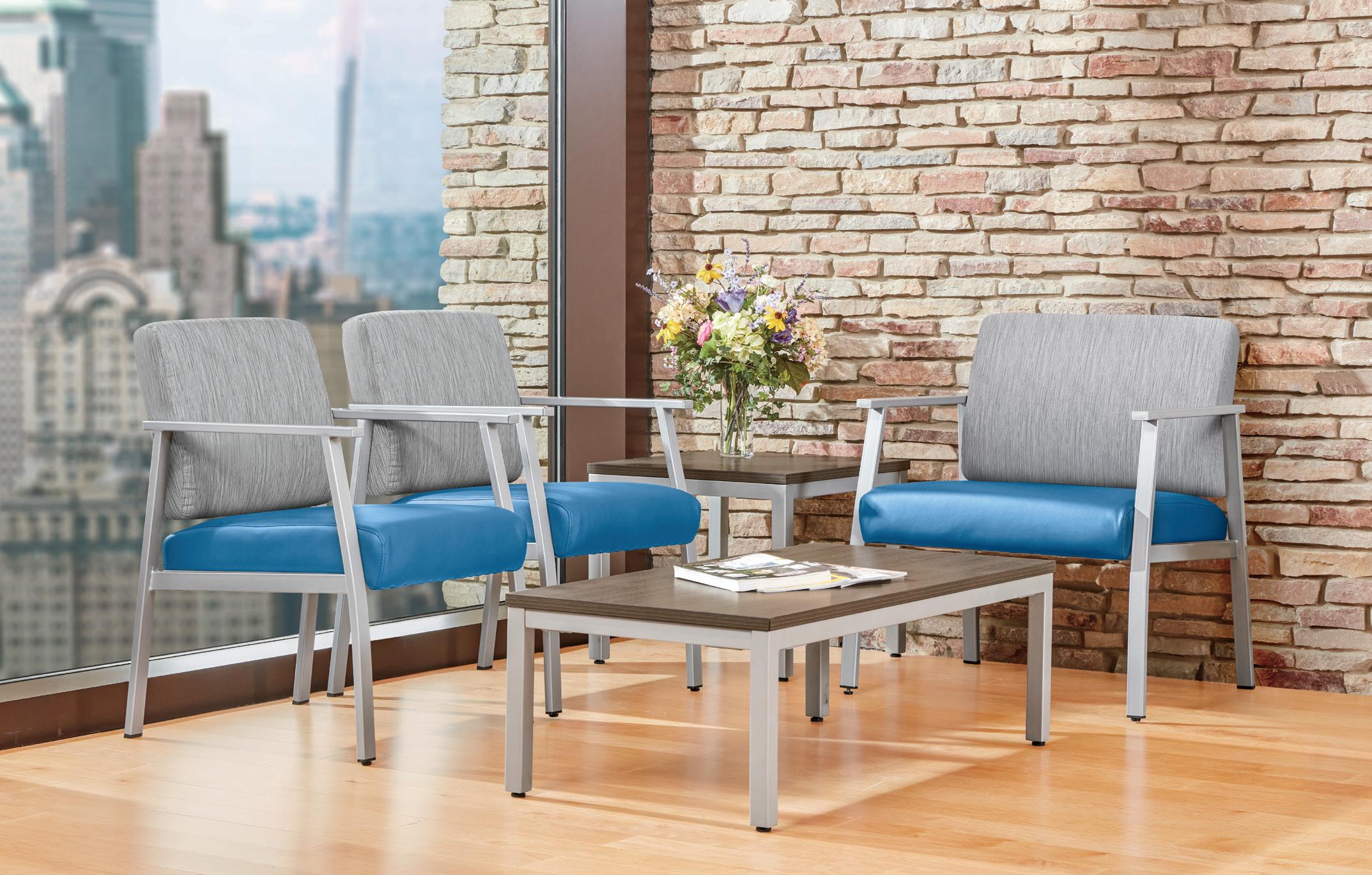
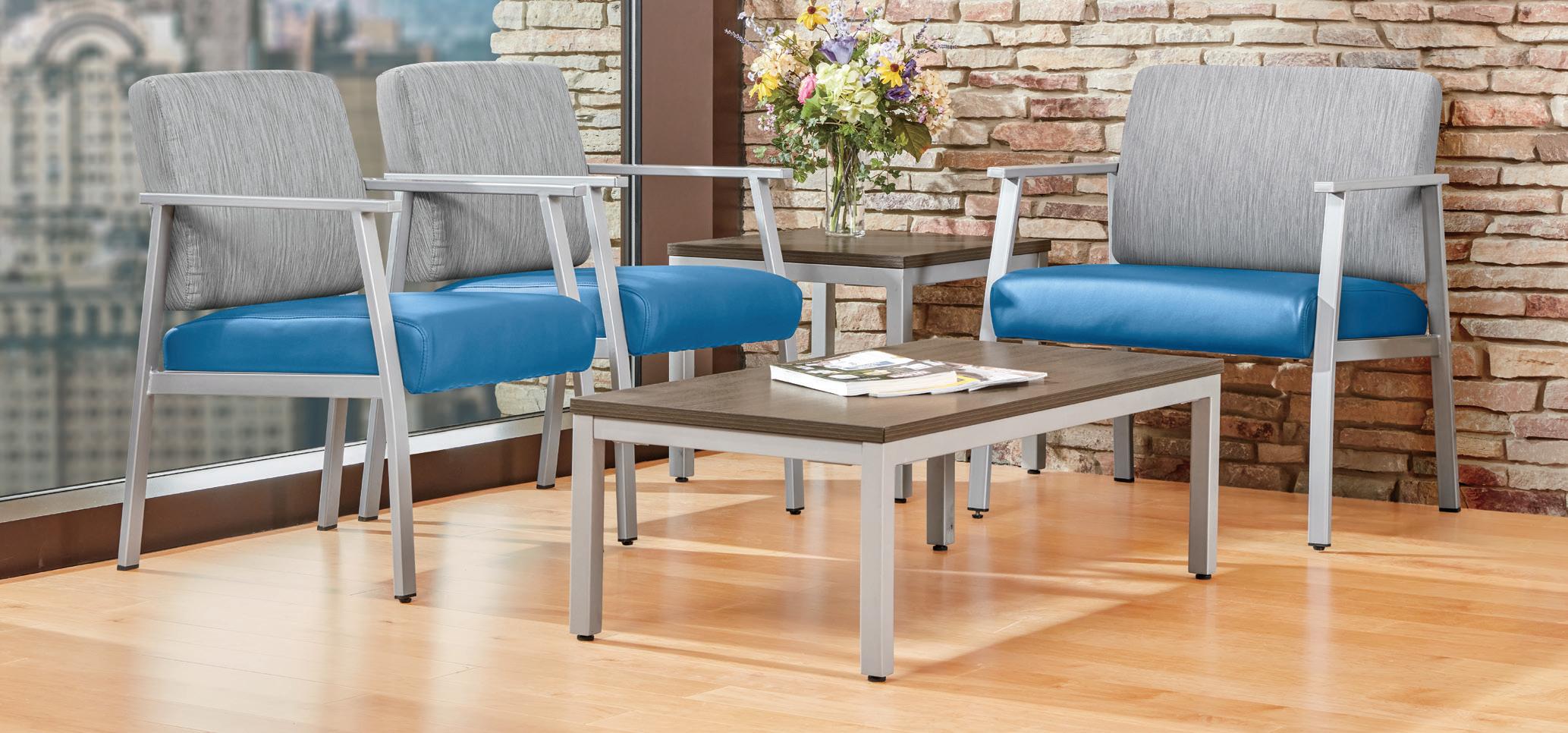

nouveau souffle de confort à Albright Manor
SPONSORED BY

Talking to a family member about entering long-term care often ranks among the toughest of tasks, perhaps seconded by selecting a senior living facility that offers the right combination of support services and amenities. Albright Manor in Beamsville, Ont., fulfills these top-level priorities, with the addition of being situated in one of the most picturesque areas of the province — high on the Niagara Escarpment, surrounded by breathtaking views of Lake Ontario and expansive vineyards.
But despite the tranquil setting, the 2002-built facility’s aging
Aborder le sujet d’une entrée en centre d’hébergement de longue durée avec un proche, c’est rarement facile. La tâche, déjà délicate, se double du casse-tête du choix: trouver ce lieu qui marie soutien attentionné et confort moderne. À Beamsville, Albright Manor relève ce défi haut la main. L’établissement offre un rare privilège: s’installer au sommet de l’escarpement du Niagara, les yeux plongés dans les paysages de rêve du lac Ontario et des vignobles infinis.
Pourtant, sous cette tranquillité de carte postale, le bâtiment de

infrastructure began to strain the very environment Albright Manor had worked so hard to create for its more than 230 occupants. Outdated heating, ventilation and air conditioning (HVAC) equipment and building controls made it difficult for staff to maintain resident comfort.
With critical mechanical systems posing a significant risk of failure, Albright Manor’s senior management, led by former CEO Saad Akhter, sought to remedy the situation. The upgrade project, which began with early planning and design discussions in 2020, and was substantially completed in October 2023, was awarded this year’s Wayne McLellan Award of Excellence in Healthcare Facilities Management, sponsored by Honeywell.
“To see our team’s vision recognized at a provincial and federal level reaffirms the importance of the work we’ve done to improve the lives of our residents,” says Akhter, adding the award is not just for Albright Manor, “but for everyone who believes in advancing long-term care.”
Looking for a forward-focused solution, not a Band-Aid, and one that would reduce energy and operating costs as well as environmental emissions, Albright Manor leadership solicited the assistance of a well-experienced private sector partner. This collaboration provided a better understanding of the building’s
2002 a pris de l’âge et son infrastructure s’est érodée, menaçant le climat de bien-être patiemment bâti pour plus de 230 résidents. Faute de systèmes CVC et de commandes modernes, le personnel peinait chaque jour à préserver la sensation de confort tant promise aux aînés.
Alors que les systèmes mécaniques majeurs menaçaient de tomber en panne à tout moment, la direction d’Albright Manor, menée par le ancien PDG Saad Akhter, a décidé d’agir sans attendre. En 2020, elle lance la refonte: planification minutieuse, conception revue de fond en comble. Trois ans plus tard, en octobre 2023, la modernisation est couronnée par le prix d’excellence Wayne McLellan pour la gestion des établissements de santé, une distinction remise par Honeywell, qui salue un projet hors norme dans le secteur.
“Apprendre que notre projet est célébré par la province et le pays, c’est une puissante reconnaissance de l’énergie déployée pour le bien-être de nos résidents,” se réjouit Akhter.
Selon lui, cette distinction dépasse l’établissement: “Elle rend hommage à chacune et chacun qui rêve d’un avenir meilleur pour les soins de longue durée.”
Désireuse d’aller au-delà d’une solution temporaire, la direction d’Albright Manor voulait un projet qui réduirait durablement la facture énergétique, les coûts d’exploitation et l’empreinte environnementale.


operational state and what needed to be done to improve conditions for residents and staff. It also helped Albright Manor apply for a grant through the Investing in Canada Infrastructure Program, which was approved, providing the full $4.5 million in funding necessary to proceed with the rejuvenation project.
The project’s scope was comprehensive and involved removing and replacing nine existing rooftop air handling units (AHUs) nearing the end of their life; upgrading the heat pipe to a heat wheel (four of the new AHUs move 100 per cent fresh air); replacing the aging chiller and main floor AHU with high-efficiency cooling equipment; installing four high-efficiency humidifiers to elevate indoor air quality; ensuring new AHUs have MERV 13 filtration; testing, adjusting and balancing air volumes for better comfort conditions; and providing a modern, intelligent building automation system that allows for better control and monitoring of HVAC equipment.
Following the initial HVAC and building controls updates, a full lighting retrofit was completed, supported by more than $100,000 in utility rebates.
The changes appear to have reduced greenhouse gas emissions by more than 50 per cent or 194 tons per year, and total energy use by 24 per cent — well above the targeted 25 to 33 per cent of natural gas consumption annually. In dollars, this amounts to an estimated $65,000 in energy savings and $22,000 in water savings each year, money that can be redirected to fund other critical resident initiatives.
“The project represents a generational investment in long-term care within our community,” says Akhter. “It’s significant not only because of its scale but also because it sets a new standard for what long-term care can and should look like — one that prioritizes well-being, sustainability and innovation, while being energy-efficient as much as possible.”
Like many large-scale developments, Albright Manor faced challenges related to supply chain disruptions. Being an occupied facility added to the project’s complexity. Work needed to be carefully phased so as not to disrupt the continuum of care. Residents were
Elle s’est flanquée d’un partenaire privé chevronné: une collaboration précieuse qui a permis de cerner précisément les besoins pour améliorer le quotidien des résidents et du personnel. Ce partenariat a aussi ouvert la voie à une subvention du Programme d’infrastructure Investir dans le Canada; résultat: La totalité des $4.5 millions réunis pour offrir un nouveau souffle à l’établissement.
La portée du projet était vaste: il comprenait la dépose et le remplacement de neuf centrales de traitement d’air (CTA) sur le toit, arrivées en fin de vie; la modernisation du caloduc en roue thermique (quatre des nouvelles CTA assurant 100 pour cent d’air frais); le remplacement du refroidisseur vieillissant et de la CTA du rez-de-chaussée par des équipements de refroidissement à haut rendement; l’installation de quatre humidificateurs à haute efficacité pour améliorer la qualité de l’air intérieur; l’assurance que les nouvelles CTA bénéficient d’une filtration MERV 13; le test, le réglage et l’équilibrage des volumes d’air pour un meilleur confort; et la mise en place d’un système d’automatisation du bâtiment moderne et intelligent, permettant un contrôle et une surveillance accrus des équipements CVC.
Après la modernisation des systèmes CVC et des automatismes, l’éclairage a, lui aussi, fait peau neuve: une rénovation totale, rendue possible grâce à plus de $100 000 de remises accordées par les fournisseurs d’énergie.
Résultat: les émissions de gaz à effet de serre ont chuté de plus de moitié (194 tonnes/an) et la facture énergétique s’est allégée de 24 pour cent — bien mieux que la cible fixée pour le gaz naturel. Concrètement: $65,000 d’énergie et $22,000 d’eau économisés chaque année, des fonds désormais disponibles pour enrichir la vie et les projets des résidents.
“C’est un investissement pour toute une génération de soins de longue durée dans notre communauté,” souligne Akhter. “Au-delà de sa portée exceptionnelle, ce projet crée un nouveau standard: des soins axés d’abord sur le bien-être, pensés dans une logique d’innovation, portés par la durabilité et la maîtrise de notre énergie.”
moved one section at a time and installation of the new HVAC equipment was done during the shoulder season.
“This was particularly important as our residents are generally elderly individuals who are very sensitive to change and disruptions,” says Akhter.
Instrumental in the project was the facility’s engineering team. Staff developed a health and safety plan; worked closely with the private sector partner on a day-to-day basis to support the installation phase, ensuring the plan was followed and adjusted as required; and monitored the level of quality to ensure it met Albright Manor’s high standards. The team also played a key role in presenting the project to the board for approval, and communicating critical aspects of the program and what to expect with both staff and residents. In collaboration with the facility’s private sector partner, the engineering group hosted an information day, where attendees enjoyed lunch, social activities and learned about the project. The event went beyond showcasing technical upgrades and their benefits; it served as an opportunity to bring the community together and provide an inside view of the investment.
“The success is directly tied to collaboration between Albright Manor leadership, our dedicated staff, the engineering and design teams of our private sector partner, and the community,” says Akhter. “Everyone shared a common vision, and that unity carried us through challenges and helped ensure the outcome met our goals of improving safety and sustainability, but also enhancing the quality of life for residents and working conditions for staff.”
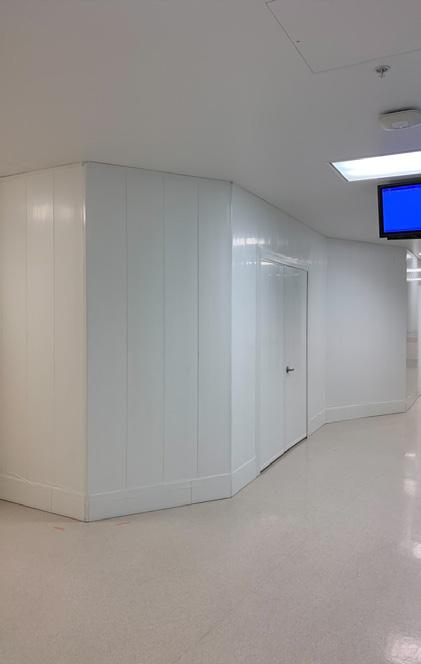

Comme tout grand projet, Albright Manor n’a pas échappé aux aléas de la chaîne d’approvisionnement. Complexité supplémentaire: poursuivre les rénovations dans un lieu habité. Chaque étape a donc été minutieusement séquencée pour préserver la continuité des soins: les résidents déménagés zone par zone, les interventions techniques programmées en saison intermédiaire, là où la transition se fait en douceur.
“Ce point nous tenait à cœur, car nos résidents sont pour la plupart âgés et réagissent fortement à tout changement ou au moindre bouleversement,” précise Akhter.
L’équipe technique a été le moteur du projet. Elle a d’abord bâti un solide plan santé-sécurité, avant d’accompagner chaque jour le partenaire privé durant l’installation, ajustant en temps réel et contrôlant la qualité à la hauteur des standards d’Albright. Elle s’est illustrée aussi bien devant le conseil d’administration qu’auprès du personnel et des résidents, pour expliquer chaque étape et rassurer. En collaboration avec le secteur privé, les techniciens ont fait vivre une journée d’information qui a réuni la communauté: repas convivial, animations et plongeon dans les coulisses du chantier. Plus qu’une vitrine technique, l’événement a renforcé le collectif autour d’un même projet d’avenir.
“Notre réussite est le reflet d’une vraie synergie entre la direction, chaque membre du personnel, les experts techniques et la communauté,” conclut Akhter. “C’est la vision partagée de tous, cette force collective, qui a permis de franchir les obstacles et d’atteindre notre rêve: des lieux plus sûrs, plus durables, et surtout un quotidien meilleur pour nos résidents comme pour nos équipes.”
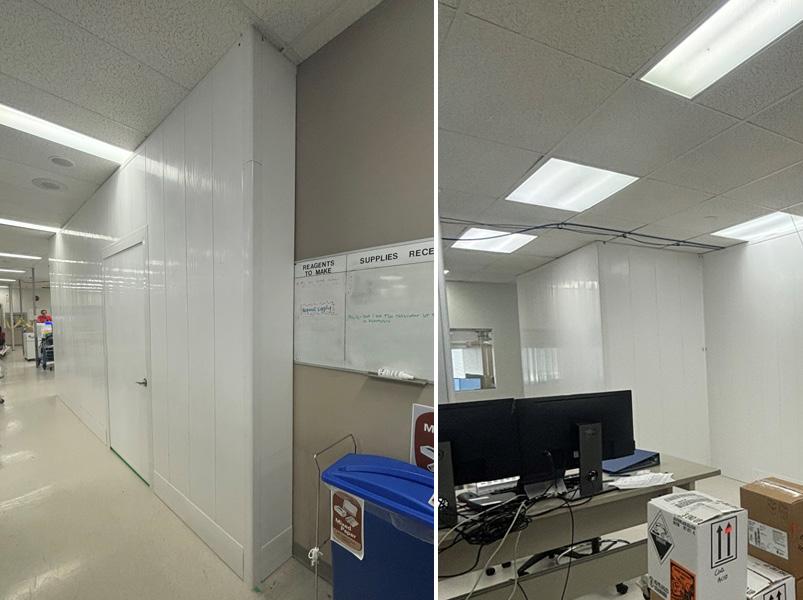

SPONSORED
BY

Deciding when to retire is not just a matter of dollars and cents. A number of factors must be taken into consideration, from professional motivation to plans upon exiting the workforce, family obligations to one’s health, both physical and mental. For Roger Holliss, who spent his entire career in healthcare at St. Mary’s General Hospital in Kitchener, Ont., it came down
to having peaked in his position and project delays. With no room for upward mobility, master-planned hospital redevelopment on hold and St. Mary’s Heart Rhythm program up in the air, Holliss felt it was time to hang up his hat, as the expression goes. He selectively chose March 6, 2020 — his 60th birthday — giving himself roughly six months to prepare for the transition that involved starting a
part-time consultancy business, which helps healthcare facility managers, and the private firms that service these managers, to improve healthcare facility operations. Despite requests to stay on, and receiving news in December 2019 that the provincial Ministry of Health had finally green-lit construction of the Heart Rhythm program, to be fast-tracked for the forthcoming spring, Holliss remained steadfast in his decision to retire. In hindsight, it was the best thing he could have done. Just two days after his ‘farewell’ party, he returned to St. Mary’s, not as the hospital’s director of engineering and biomedical services, but as Roger Holliss Consulting Inc. Prior to his departure, Holliss was asked to third-party project manage the $13 million three-phase expansion of the Heart Rhythm program that he had spent the better part of three years spearheading — his first consultancy job and testament to how much the hospital C-suite valued his leadership. Three days after that, the World Health Organization declared the COVID-19 outbreak a global pandemic.
“It worked out better than I could have ever imagined,” says Holliss, who is grateful to have left healthcare before the ubiquitous disease wreaked havoc on it, and simultaneously thankful for the work it has continued to provide.
“I’m busier today than I ever have been,” he says. “I have four clients, two of them hospitals and the other two are companies that want to increase their presence within healthcare.”
On top of his consultancy job, Holliss has an online fine art business. Born from a hobby that began in high school, he creates soapstone animal carvings and oil paintings inspired by nature. When not working, Holliss can be found playing virtually any sport that involves a ball — from golf to tennis to squash and now even pickleball — and competing provincially, nationally and internationally as a masters athlete in the track and field circuit, with a particular passion for the five throwing events.
Holliss is still also an active member of the
Canadian Healthcare Engineering Society (CHES), serving as a representative on the technical subcommittee for CSA Z317.12, Cleaning and Disinfection of Healthcare Facilities. Additionally, he is vice-chair of the technical subcommittee for CSA Z7396, Medical Gas Pipeline Systems. In this role, served since 2015, he has co-developed and released three cycles of medical gas qualified persons training courses, directly enhancing the safe use and management of medical gas systems across Canada.
Holliss’s initial involvement with CHES coincided with gaining employment at St. Mary’s. Hired in December 2000, and new to the public sector — he previously worked as a logistics coordinator at Moore Business Forms, acquired by R.R. Donnelly — Holliss was advised by his soon-to-be predecessor to familiarize himself with CHES. Faced with a steep learning curve, he travelled to Collingwood, Ont., in spring 2021, to attend the Ontario chapter’s conference. There, he partook in every available education session, eager to soak up as much information as he possibly could.
“New to the industry, I could barely spell out ICU, let alone know what it was,” jokes Holliss, who holds a master’s degree in engineering from Western University in London, Ont.
The conference proved invaluable and fuelled his interest in healthcare engineering — a field he expected to leave after roughly 18 months to return to the private sector, but instead stayed in for 20 years.
Duringhislongtenure,Hollisscametooversee multiple departments at St. Mary’s, including engineering, redevelopment, biomedical services, parking and security. He played a key role in three building additions, lending his engineering expertise, and introduced a computerized maintenance management system and real-time digital as-built drawing system, the latter eventually adopted by multiple hospitals across the province.
“THERE’S A SENSE OF ACHIEVEMENT IN KNOWING SOME OF THE THINGS I PUT IN PLACE ARE STILL AROUND AND TOP DRAWER."
“There’s a sense of achievement in knowing some of the things I put in place are still around and top drawer,” says Holliss.
What he’s most proud of, however, is his accomplishments with CHES.
After several years as a member or, as he calls it, observer, Holliss volunteered to serve on various committees, eager to give back to the organization he had already gained so much from. Then, at the behest of Allan Kelly, chair of CHES Ontario from 20112015, he ran for office. For six years, he sat on the Ontario chapter executive, serving as vice-chair (2013-2015), chair (2015-2017) and past chair (2017-2019). He facilitated submissions for the President’s Award that CHES Ontario won not once, not twice, but three times, and consecutive at that — a feat no other chapter has realized until present day. (The Maritime chapter completed the hat trick this year.)
“We’d never won it before and haven’t won it since,” says Holliss.
The President’s Award was created in 2014, to foster engagement and encourage chapter participation in executive and committee work in order to support the work of CHES. Points are given in various categories, with the total determining the annual recipient.
“Drawing on my German background, I was diligent in making sure we ticked off all the boxes to get all the points,” says Holliss.
Once he finished his stint as Ontario chapter chair, Holliss focused his contributory efforts at the national level, again at Kelly’s encouragement. Positions held include vicepresident (2017-2019), an extended term as president because of the pandemic (20192022), and past president (2022-2024).
As CHES National vice-president, Holliss supported the delegation that secured Canada’s successful bid to host the 2022 International Federation of Healthcare Engineering (IFHE) Congress in Toronto, bringing global attention to Canadian healthcare engineering. Held in conjunction with the society’s national conference, it was the first big in-person event in two years. All events were cancelled in 2020, due to COVID-19, and CHES moved to a virtual delivery model for 2021. Holliss’s demonstrative leadership was instrumental in this successful rapid transition and the triumphant return to face-to-face engagement the following year.
While on the national board, Holliss also initiated critical governance improvements, streamlining CHES’s structure and revising bylaws to clarify membership and executive eligibility; resolved a Canada Revenue Agency dispute regarding CHES’s charitable status; and oversaw the development and implementation of CHES’s first multi-year strategic and marketing plan that still guides the organization today.
For all his contributions — to CHES, his profession and the Canadian healthcare industry as a whole — Holliss was selected as this year’s recipient of the Hans Burgers Award for Outstanding Contribution to Healthcare Engineering, sponsored by BGE Indoor Air Quality Solutions.
“You always wonder if, after all these decades, what you did mattered,” says Holliss. “Receiving this award acknowledges the time and effort was worth it, and I’m so thankful for the recognition from my peers and the people I served.”
SPONSORED BY

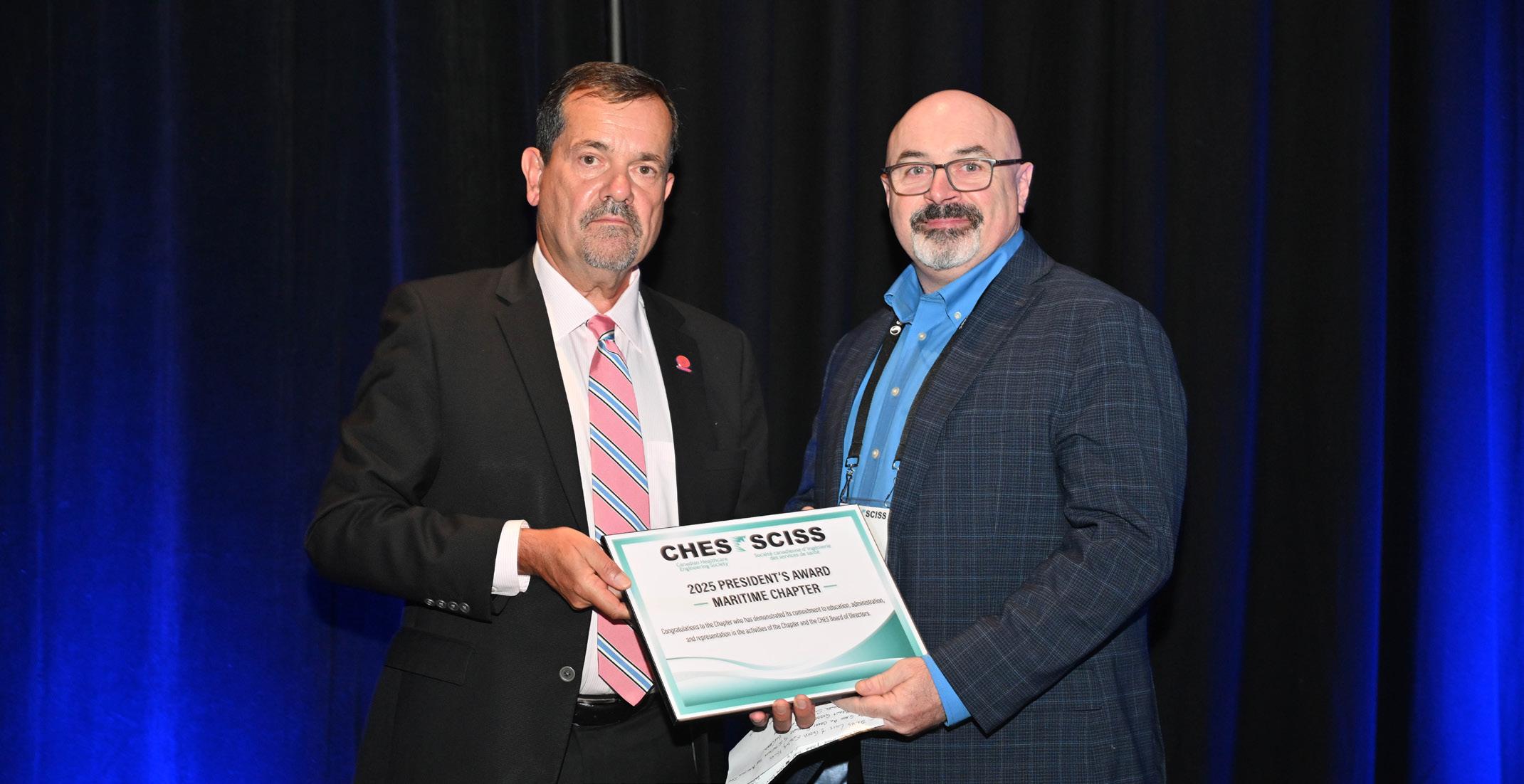
In hockey, a hat trick is a phenomenal feat. To score three goals in a single game requires great ability, awareness and a touch of luck. It’s difficulty and rarity therefore deserve to be celebrated, done so by fans throwing hats onto the ice from stands. While associated with hockey, though the term originated in the sport of cricket, a hat trick can occur outside the rink, too. For instance, if an advertising agency has three widely successful back-to-back campaigns or a car salesperson sells three vehicles in one day, that can be referred to as a hat trick. The same goes for CHES Maritime’s win of the President’s Award, sponsored by Trane. The chapter has proven victorious three years in a row, an astounding accomplishment recognized at this year’s CHES national conference in Calgary, by more than 600 members of the Canadian Healthcare Engineering Society at the gala banquet.
“It was hard to contain my excitement — I was outwardly giddy of our hat trick win,” says chapter chair Steve Smith, who accepted the award on behalf of the CHES Maritime executive, which also includes Brent Godbout (executive vice-chair), Ken Morriscey (Nova Scotia vice-chair), Kate Butler (New Brunswick vice-chair), Gordon Jackson (treasurer), Nathaniel Schrader (secretary), Jason Turner (corporate associate representative) and Robert Barss (past chair).
The President’s Award is presented annually to the CHES chapter that demonstrates its commitment to education, administration and representation in the activities of the chapter and national board. Each chapter is scored on accounting practices, conference/education day, membership, chapter executive practices, committee work and additional offerings (from submitting articles to CHES’s journal, Canadian Healthcare Facilities, to providing extra member benefits). Specifically, points are given for
activities that benefit members and the work of CHES, such as number of meetings attended in the course of committee work and special education sessions. The recipient of the muchcoveted award receives two CHES national conference registrations and expenses paid up to a maximum of $2,500 each, as well as a trophy engraved with the winning team’s names.
Since the President’s Award was introduced in 2014, CHES Maritime has been bestowed the honour six times in the past 12 years. The most recent win was razor thin, with the chapter narrowly nudging out the others.
“This reflects the competitiveness of the award, and the outstanding work and efforts being done across all chapters,” says Smith.
He adds, “The award is not just a recognition — it’s a reminder of what we can achieve when we work together as a team with purpose and passion. The Maritime chapter’s cumulative wins demonstrate our consistent engagement and commitment to the profession, our peers,
clients, patients and buildings.”
Over the past year, the chapter executive has been diligent in contributing to the work of CHES through participation in various committees, including professional development, communications, governance, partnerships and advocacy, and membership.
The team has also been focused on growing membership. In recent months, CHES Maritime has added 30 new members, a gain of roughly 10 per cent, to bring the total to 312, making it the third largest chapter. Growth has mainly come from the long-term care sector, which, Smith says, highlights the burgeoning impact of CHES across the healthcare continuum. The chapter has been active in recruiting personnel with the Nova Scotia Department of Seniors and Longterm Care, helped along by Morriscey, who worked with the department and has been instrumental in developing a relationship between it and CHES.
Though these numbers are commendable, Smith acknowledges more work is to be done to improve representation. Comprised of Nova Scotia, New Brunswick and Prince Edward Island, CHES Maritime has few members from the smallest Canadian province, in terms of both land size and population, and no one from the region currently sits on the chapter executive. He says they’re in early discussions with P.E.I. leaders to promote the benefits of CHES, and recruit members and chapter representatives.
Smith further recognizes that greater efforts need to be made to encourage existing members to join the executive table for succession, fresh ideas and outlooks, something the team is actively working on.
On the education front, CHES Maritime has continued to offer learning opportunities to both members and non-members. Its fall education day takes place Nov. 25, in Truro, N.S., and is free for members to attend. This past spring, the chapter held its annual conference May 4-6, at the Delta Beausejour in Moncton, N.B., around the theme, Healthcare Infrastructure for a Resilient and Safe Environment. It was highly attended by 228 people. Due to an overwhelming response, registrations had to be closed early at 98 delegates and speakers. The trade show floor was sold-out with 130 exhibitors representing a total of 53 booths — nearly double the typical number of vendors.
The Maritime chapter supports professional development in other ways, too, providing free access to CHES webinars and reimbursing the cost of the Canadian Certified Healthcare Facility Manager program, including both sample and certification exams, upon successful completion. The chapter also offers monetary assistance to the next generation of healthcare professionals through the Per Paasche grant. The $1,000 bursary is awarded annually to a CHES Maritime member or their family member to assist with post-secondary education. The 2025 recipient is Jacob Comeau. A Grade 12 student at Hampton High School in New Brunswick, Jacob works part-time at All Access Scaffolding and is a junior member of the Peninsula volunteer fire department. He is the son of Helen Comeau, a fire and safety officer and manager of the grounds department at Horizon Health Network. She served as Maritime chapter chair and past chair from 2016-2022 and 2022-2024, respectively. Jacob’s educational goal is to obtain a Red Seal as a millwright/

industrial mechanic, while gaining other traderelated certificates in, for example, welding and hydraulics. He aspires to become a healthcare facilities tradesperson to maintain safe and healthy environments for patients.
This year, CHES Maritime also sponsored the Young Professionals Grant, which is given to a young professional who is or will become an architect, engineer or technician, or work in a similar technical discipline. Eligible candidates must be employed by a healthcare organization, or a company that supplies goods or services to healthcare facilities or organizations, and have worked in the healthcare field for less than five years. The chapter’s secretary, Schrader, was the chosen recipient, via a competitive application process, providing the opportunity for him to attend the 2025 CHES National Conference in Calgary, with registration and travel costs covered to up to $2,500. He also received a oneyear complimentary CHES membership.
In further support of members, the chapter is creating the Outstanding Contribution to Healthcare Facility Management Award. It will be presented annually to a regular CHES Maritime member who has applied their experience and knowledge to produce exceptional results in their healthcare environment and has demonstrated excellent personal qualities.
“It’s an honour to be recognized with the President’s Award, which reflects the dedication of our executive team. But just as importantly, it’s a tribute to the commitment of our regular members, whose ongoing contributions truly strengthen our chapter and the broader CHES community,” says Smith. “This recognition is a chance to give back and celebrate everyone who makes our work possible.”
Facility managers in long-term care environments play crucial role in ensuring safety, quality of life
By Marcia O’Connor

Alongside building maintenance, environmental service managers’ (ESMs) role incorporates data-driven approaches to meet immediate needs and plan for the future. The lesson from recent years is clear — data can be transformative, if used effectively.
The COVID pandemic underscored the value of data. Facility managers were deemed essential services. They relied on accurate, realtime information to meet healthcare protocols and regulations, and protect patients and staff. Balancing compliance, efficiency and resident well-being is essential. Data offers the insights needed to maintain this balance. However, raw data without a clear strategy can be overwhelming. Tools like visual dashboards,
predictive maintenance software and Internet of Things (IoT) sensors are necessary for turning information into practical, actionable insights. With advanced analytics, facility managers can not only understand past and present conditions but also forecast future needs.
Data collection in long-term care facilities isn’t without hurdles. Many homes use building automation systems that output data in complex formats, making interpretation challenging. Integrating data from disparate systems and achieving interoperability with healthcare databases can also be difficult, requiring thoughtful planning and sometimes specialized tools. These challenges highlight the need for streamlined data systems that can pull information from multiple sources to
support better decision-making.
Good data is critical but actionable insights are what truly drive success in long-term care. Accurate data helps facility managers and ESMs identify trends and tangible benefits, such as cost savings and improved safety, as well as forecast needs, whether related to building maintenance or staffing levels.
Data has the power to transform long-term care operations in a variety of ways.
Regulatory compliance. Meeting legislative requirements is paramount. Data helps track compliance, reducing risks and liabilities.
Adherence to health and safety standards. By regularly tracking and reviewing compliance-related data, facility managers and ESMs can proactively address health and
safety issues, ensuring legislative requirements while enhancing the overall home environment.
Predictive maintenance. Anticipating maintenance needs before they become problems helps extend equipment life and reduce disruptions.
Resource optimization. Data allows for smarter decisions on energy use, staffing levels and budgeting, ensuring quality service within financial constraints.
Informed budgeting and financial planning. With clear financial insights, data supports effective planning, justification of investments and identification of savings opportunities. By tracking the return on investment of data initiatives, facility managers and ESMs can demonstrate how these efforts contribute to the long-term financial health of their care home.
Resident-centred metrics. At the heart of long-term care data usage is the commitment to resident care. Facility managers and ESMs can track metrics like air quality, room temperature, response times and environmental comfort to directly impact residents’ day-to-day experiences.
Creating a data-driven decision-making culture involves training staff to see beyond the numbers — to understand how data can enhance resident care and management. Engaging everyone, from frontline staff to leadership, in the process of gathering, interpreting and using data ensures a collective commitment to informed decision-making.
The long-term care industry is evolving and so is the role of data. Emerging trends like telemedicine integration, enhanced IoT capabilities and real-time data analytics are expected to further improve facility management. Staying ahead of these trends will help long-term care spaces remain resilient and responsive.
Today, data remains vital for resilience, compliance and safety. Focusing on these metrics aligns data usage with the core mission of longterm care. It’s not just about understanding what is happening; it’s about leveraging that understanding to make informed decisions that enhance care and operational efficiency in these types of homes.
ERV PARENT CO. LTD.
791 Caldew Street, Delta BC Canada, V3M 5S3 604-525-4142 | info@ervparent.com www.ervparent.com




Marcia O’Connor is president of AM FM Consulting Group. She is a strategic-minded leader with more than 20 years of progressive experience in corporate real estate, asset management and integrated facilities management. Marcia has a passion for mentoring young professionals and helping people, teams and organizations see their potential. She is the lead instructor for the School of Continuing Studies' facility management certificate program at University of Toronto.

“We are already seeing proof that our updated restrooms are improving the user experience. The touchless, solar-powered Sloan products have been crucial in this successful effort.” - Briar Del Buono



www.dobbinsales.com

By Nikhil Kanamala

It’s not uncommon for frontline healthcare workers to walk into a brand-new hospital unit and say, “This layout doesn’t match how we actually work.”
Clinical spaces should reflect clinical realities. That’s where national design and construction standards come in. They’re not just for architects; they’re tools that help ensure clinicians’ voices are heard during hospital design.
In many ways, these standards complement clinical practice guidelines. Using them in harmony better guides the design of healthcare facilities so that envisioned clinical and operational realities of safer, smarter and more functional care environments are accurately reflected, avoiding costly redesigns and rework. Further, clinician morale is boosted when their voices are heard in a more meaningful and impactful way toward final design.
In user group consultations, when asked to weigh-in on a new inpatient unit or outpatient clinic and there’s little supporting evidence available in literature or a clinical guideline, CSA Z8000, Canadian Health Care Facilities,
can act as a guide, providing space requirement tables that help with understanding the must-haves and nice-to-haves in a clinical space. Rather than reacting to sudden design decisions or being called to provide inputs with very little information, clinicians can be more informed and actively participate in user group consultations knowing they can reference comprehensive standards when needed.
In hospital planning, adjacency of specific functional areas or departments should be considered early in the process. Sound decision-making using evidence from such standards helps planners design layouts that reduce unnecessary movement and improve patient flow. Best practice layouts can optimize clinical functionality, enhance patient safety and decrease unnecessary bottlenecks for patient care and staff workflows.
For those involved in selecting or approving medical equipment, CSA Z8000 helps ensure the space can accommodate what’s being ordered to prevent ending up with a machine that doesn’t fit through the door. For equipment
planners, it allows them to effectively plan for physical fit of equipment and be able to see if equipment makes functional sense in the space. Accurate equipment fit avoids lastminute changes and workarounds.
It’s easy to get lost in architectural jargon. Design and construction standards bridge that gap as they are written in a way that’s accessible and easily understandable to clinicians so frontline healthcare workers can advocate for what matters most — safe and efficient patient care.
Some of the most obvious benefits of utilizing national standards that immediately impact the work done by frontline healthcare workers are improved infection control through better zoning and ventilation; better privacy and dignity through thoughtful room design; and enhanced adjacencies and workflows, resulting in quicker access for diagnostics, treatments and consultations.
Nikhil Kanamala is an equipment planner with Northern Health. He is a seasoned professional in biomedical engineering and capital projects and planning.
By George Pankiw

Many of you may not have have heard of CCHFM or, if you have, you don’t know what the letters stand for and what it actually means.
CCHFM, an acronym for Canadian Certified Healthcare Facility Manager, sets a national workplace standard for those responsible for the operations and maintenance of Canada’s healthcare facilities. The recognized designation signifies you have the experience to lead facilities and redevelopment teams, the knowledge to understand healthcare codes and standards, expertise with respect to financial operations, and you are proficient in facilities
management administration.
What are the steps to becoming a CCHFM?
Start by downloading the certification handbook to learn what it takes to earn the designation.
Next, try the self-assessment questionnaire to see where you stand on the core competencies and where you require further studying.
Once ready, purchase the self-assessment exam. In addition to identifying knowledge gaps, the self-assessment exam will help reduce anxiety around taking the certification exam. Most CHES chapters cover the cost of some
or all of the fees related to the program.
Then, fill out an application form and send to CHES, where your education and experience will be reviewed by the CCHFM advisory panel.
Finally, schedule and write the exam. Composed of 100 multiple choice questions that cover five broad topics, each weighted differently — compliance (25 per cent), planning, design and construction (18 per cent), maintenance and operations (28 per cent), finance (15 per cent) and administration (14 per cent) — it must be completed in two hours. The exam can be taken at one of 14 Seneca College testing centres located across the country. A minimum grade of 70 per cent is required to pass, after which you will receive a CCHFM pin to proudly wear and you can add the CCHFM designation to your name.
Healthcare facility managers face challenges every day in their work. The CCHFM designation demonstrates you are not just able but capable of successfully facing these challenges.
I first wrote the U.S. version of the CCHFM exam in 2002. With experience gained as director of facilities at Perth and Smiths Falls District Hospital, I was able to pass on the first try to obtain the Certified Healthcare Facility Manager designation, or CHFM, from the American Society for Healthcare Engineering (ASHE), which CCHFM is modelled after.
I have been a proud holder of the CCHFM designation since 2015.
George Pankiw, P.Eng, is director of capital development at Hamilton Health Sciences, and chair of the CCHFM advisory panel. Designations held include CCHFM, CHFM, Fellow ASHE (FASHE) and Certified Healthcare Constructor (CHC) from ASHE. Questions about the CCHFM program can be directed to George at pankiwg@hhsc.ca or the CHES National board at info@ches.org.
By Cory Boulet

Healthcare facilities are one of the most energy intensive types of buildings, making it increasingly difficult for them to meet sustainability targets or to control utility costs in today’s challenging economic environment. Rising electricity rates, increasing carbon taxes and societal pressures are driving an increased demand among building owners for on-site generation solutions. In many cases for a typical commercial building, a solar photovoltaic (PV) design can be quite straightforward to implement. However, a healthcare facility is built and maintained with much tighter rules and regulations, which
can introduce additional constraints when considering on-site generation systems like solar PV. These pressures can be debilitating unless properly navigated and will often require help from an experienced professional.
A key first step is to assess the physical space available either on the roof, facade or possibly even on the ground (carport or other means). Often the roofs of healthcare facilities can be quite congested with HVAC equipment, vents, drains and a helipad. Depending on the type of roofing warranty, there may be additional
constraints like keeping a minimum distance off the edge of the roof. The distance to the edge of the roof may also trigger fall protection equipment, adding cost to the project.
Having a helipad on the roof can necessitate a glare study to ensure there’s no interference with landing procedures. It is common for healthcare facilities to also be equipped with lightning protection systems, further complicating a solar PV design.
The proposed roof or facade area must be looked over by a structural engineer to determine if there is capacity for additional loading. A ballasted solar PV system can add
up to 8.5 pounds per square foot of load to the roof. Additional considerations like uplift and snowdrift also need to be accounted for, which can place constraints on the height that the PV system can extend above the roof deck.
There are methods of reducing the additional loading, such as mechanically fastening the PV racking or using a hybrid approach combining ballasted and fastened methods. Consult the roofing warranty and a structural engineer during this step.
Healthcare facilities often have patient care rooms and primary care areas along the perimeter of the facility. These can place further limitations on the usage of the facade for solar PV.
Once the location for the PV array has been identified, a preliminary design can be completed to determine the system size in kilowatts. At this stage, it’s critical to assess whether the building’s electrical distribution has enough capacity to accommodate the new PV system.
Typically, the array is connected to the main distribution board via a dedicated breaker. The allowable size of this breaker — and therefore the PV system itself — is governed by the ratings of the board’s bussing and main breaker. In some cases, this capacity becomes the limiting factor. Exceeding it may require costly upgrades to the electrical distribution, which can render the project financially unfeasible.
Alternative approaches like lowering the trip setting of the main breaker may help avoid costly upgrades; however, since healthcare facilities operate under more conservative settings to achieve optimal coordination, this may not be an option. A coordination study and careful analysis of the facility’s load profile is required to ensure electrical reliability is not compromised.
Solar PV systems on commercial buildings are
required by code to shut down upon detection of the loss of utility power so they don’t back feed onto the utility grid. This is referred to as anti-islanding and necessary for legitimate safety reasons. The anti-islanding feature is common in most commercially available PV inverters, most of which are grid-following and not grid-forming. This means the inverter must be connected to a solid source of power (utility) to operate; they cannot form the grid on their own. Inverters also operate within fairly strict frequency and voltage ranges and, accordingly, are often not warranted to operate on a system formed solely by a local generator. Healthcare facilities typically have backup emergency generators to keep the facility operating under utility outages. Depending on the type of facility, the electrical distribution may be split up into pieces, such as normal, emergency and standby; however, some facilities are backed up completely by generators.
In the first case, where the generator only backs up a portion of the building, it is important to connect the PV system to the normal piece of the distribution so that once utility power is lost and the generators turn on, the PV remains offline and does not operate concurrently with the generator.
For facilities that are almost entirely backed up by generators, it may be impossible to connect the PV system in such a way that it doesn’t operate at the same time as the generator. In this scenario, additional measures like shunt-tripping may be required. Shunttripping the PV system once the generators kick in can be a nuisance because of how common the generators run at a healthcare facility, so proper attention should be paid to the control mechanism in place. If the facility desires to have the PV system contribute to the building load under emergency or islanding conditions, the facility may want to look at a microgrid.
A microgrid consists of on-site generation
and/or storage of sufficient capacity to operate electrically without a utility connection indefinitely or for a period of time. Microgrids can vary wildly and there’s no single solution that will work for every building. Due to technological advancements, there has been increased interest in energy storage coupled with solar PV to form a microgrid. Complex distribution layouts and control schemes are required to achieve a microgrid using storage, PV and generators. It can be cost prohibitive to implement such a solution on a healthcare facility. Prior to a facility setting its sights on a microgrid solution, a feasibility study should be conducted to determine if the electrical distribution and utility arrangement can support it.
The next hurdle to overcome with microgrids is the compliance with CSA standards Z32, Electrical Safety and Essential Electrical Systems in Health Care Facilities, and C282, Emergency Electrical Power Supply for Buildings. Currently, the Z32 standard requires prime mover type generators to act as the backup source should the utility power fail, and often more than one generator is needed for redundancy. Solar PV and battery storage systems do not count as emergency backup.
While microgrid technology is evolving rapidly and adoption is growing in other sectors, healthcare facilities remain conservative by necessity. As standards evolve and microgrid technologies mature, the healthcare industry may begin to revisit these options. For now, most are sticking to proven solutions that align with existing codes and operational requirements.
Cory Boulet, P.Eng, is an associate with SMP Engineering. Sustainable electrical design is at the core of everything the company delivers. SMP Engineering has led more than $2.2 billion in healthcare projects and designed more than 15-megawatt of solar capacity, contributing to some of Western Canada’s most vital and forward-thinking developments. Its team brings deep technical expertise and a commitment to purposeful, future-ready design.

By Jean-Guy Levaque
The impact of climate is real. Roof performance is directly affected by sustained heat waves, stronger wind events and extreme precipitation.
Hospitals need to be built to provide continuous critical services, but also to serve as muster points for emergencies, roles that other buildings are not designated for.
These two statements highlight a critical tension: An improperly built hospital roof may fail during severe weather conditions, negating much-needed shelter and essential services functions for society.
How can the odds be put in their favour then?
Consider the initial design concepts of
hospital roofs. Their main functions are to allow roofs to perform in the long-term, prevent leaks from occurring, stay in place and provide internal comfort for occupants. If roof designs don’t meet all these functions, there will be extensive costs to remediate failures.
Secondarily, roofs have been considered for ancillary functions: gardens for health therapy; platforms for energy production (solar photovoltaic arrays); water capture and retention (vegetated roofs, blue roofs, purple roofs); communication (transmission towers); and urban farming (bees, food). These uses put a strain on roof system performance, as the roof now must operate in other ways and are subjected to overburdens and traffic.
Designing to meet building codes is also a problem. By definition, building codes are in place to provide the minimum standard for safe structures, with the primary goal of occupant safety. This applies to roofs in new construction. The codes are even worse when it comes to roof retrofits/replacement, where a designer could replace roofs with like-for-like materials. In more extreme cases, roofs with as little as R2 value could be retrofitted with the same minimal R value.
Let’s assume the design concept is correct, but value engineering occurs during construction to find cost savings. In an effort to cut costs, roofs will be the target. Systems are altered and performance characteristics are typically
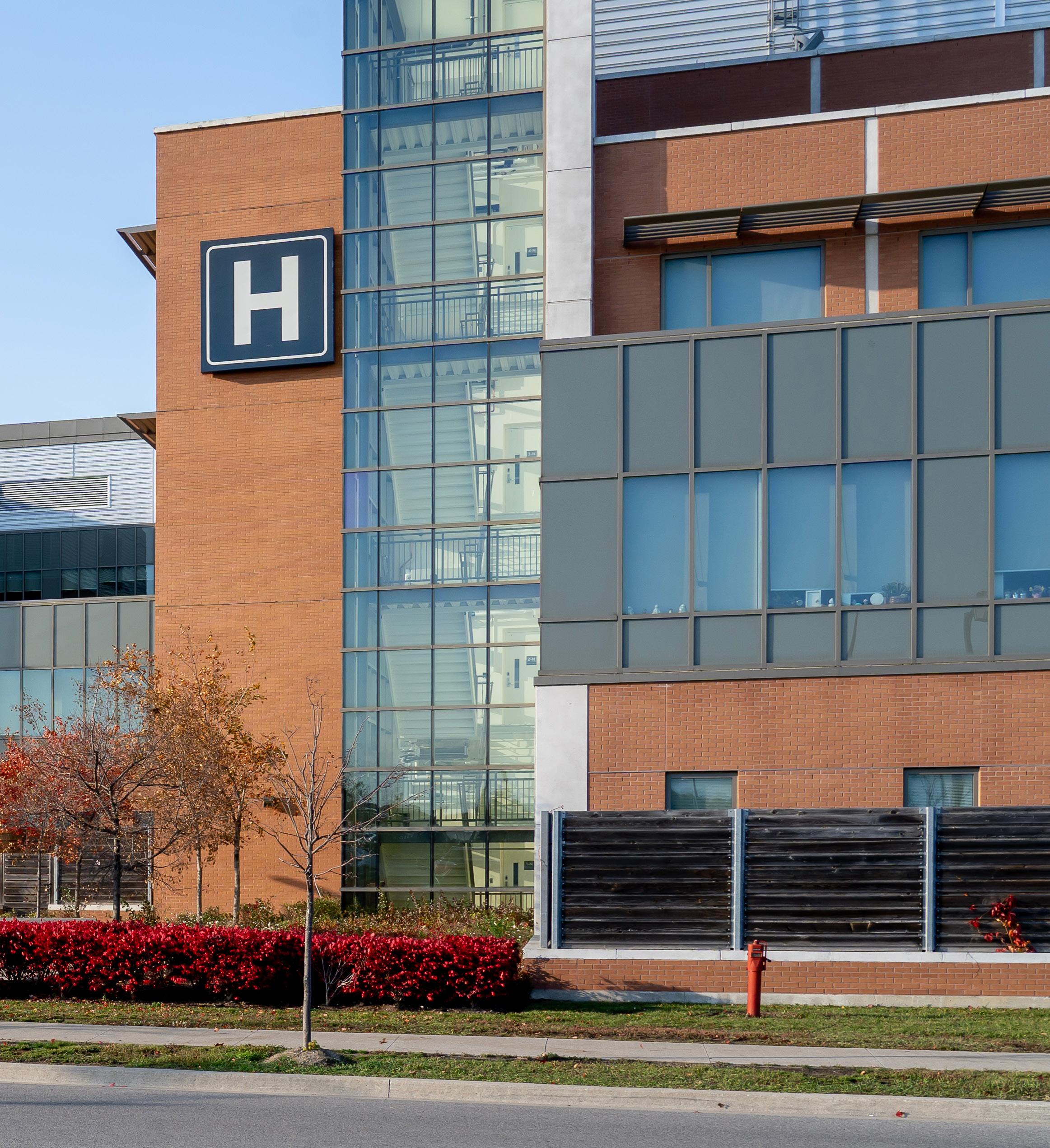
diminished. This practice must change. Enhancing roof system performance should be top of mind in both new construction and roof retrofits.
An article in Canadian Architect discusses the evolution of codes and that they must “get with the times.” It references the need to consider higher standards for building codes as the climate crisis worsens, but proposes to go further to incorporate resilience in buildings. To the extent possible, it is important to anticipate future climate conditions, energy regulations and technological advancements for clients to make informed decisions.
Today, such a standard exists for wind and drainage for commercial roofs: CSA A123.26, Performance Requirements for Climate Resilience of Low Slope Membrane Roofing Systems. Although it is not a requirement in building codes yet, it sets the stage for designing to meet future climate changes. The basic premise is to enhance roof system performance by designing to three performance levels: bronze, silver and gold. Bronze meets present-day building codes, while gold improves the resiliency
of roofs to meet future climate-related events. For hospital roofs, the gold standard should be the default to meet the objectives of the National Strategy for Critical Infrastructure, as set by the federal government. Roofs should be designed to increase drainage and prevent failures in high wind events. The design community should start designing to this standard, not only for new construction but also for roof replacements where feasible.
The framework of the CSA standard has three distinct parts: determine climate zone severity classes of National Building Code locations; select resiliency and roof performance level; and locate adaptation measures commensurate with the chosen climate zone severity, resiliency and building performance levels with the help of an interactive user tool.
In addition to designing for wind and drainage, occupant comfort includes increasing the thermal resistance of roofs by adding insulation in the roof assembly. As previously noted, some roofs may only have R2 thermal values. Thirty years ago, the common practice was to insulate with R15 to R20, based on costs of insulation, payback and energy costs
at the time. Since then, energy costs have risen significantly, weather patterns have changed and insulation requirements have increased. New construction hospital projects now incorporate higher R values (R20 to R30+) depending on the region. Greater R-values should be incorporated at the onset to address future weather extremes and higher energy costs. Designed properly, the insulation components can last for the life span of the building and will not need to be replaced when roof membranes are renewed.
Another field of expertise in roofing retrofit is the approach to salvaging materials. This requires a greater understanding of roofing technologies and component performance.
Roof system designers’ qualifications and expertise are key to successful roof designs. Unfortunately, the wrong individuals are asked to provide their expertise in designing roofs for many projects. Most requests for proposals for professional services are structured to consider lowest cost bids over technical expertise. This approach needs to change, with emphasis on awarding work based on qualifications and expertise, with fees negotiated afterward. An expert roof consultant on the design team will not only provide the proper design elements but will also bring forward future thinking on roof performance. This will save clients in the long-term with roof performance benefits.
New and existing roofs are increasingly becoming platforms for many ancillary functions. Whether this is good or not depends on one’s perspective. From a roof consultant’s experience, the more roofs are accessed, the greater the risk of leaks and damage that will impact the long-term performance. From an end-user’s perspective, the intended function of the roof is a priority and roof performance secondary. With respect to hospitals, there is a move to consider the use of roof spaces for patient therapy in the forms of gardens and quiet spaces. These features can be critical additions to hospital environments but must be integrated in long-term roof system design performance strategies.
Some of the challenges on roofs when such overburdens are added include more difficult access to roof systems for inspections and maintenance; premature wear, leaks and roof failures; roof system monitoring; and higher costs for roof repairs and replacement.
Specific roof maintenance and monitoring programs need to be at the core of the hospital operations team to proactively address any issues that may lead to potential leaks and damage to roof assets. This becomes even more important when overburdens are added.
Some solutions to these challenges are quality assurance to monitor installations; longer performing roofs; better quality membranes and stronger base materials; more resilient roofs; leak monitoring tools to pinpoint issues; and modular overburden, easily removed.
When it comes to roof maintenance, a detailed program should be established and followed. The program can be carried out in-house or with a qualified contractor, or a combination of both. The goal is to seek out and address issues before they become too big to handle. A good resource is the Canadian Roofing Contractors Association’s roofing preventive maintenance manual. This manual helps identify immediate repairs needed to prolong the service life of roofs (damaged membrane or flashings that could lead to leaks, deteriorated sealants and caulking, loose metal flashings, and so on); and preventive maintenance work, including removing debris from drains and removing vegetation growth,
SPECIFIC ROOF MAINTENANCE AND MONITORING PROGRAMS NEED TO BE AT THE CORE OF THE HOSPITAL OPERATIONS TEAM TO PROACTIVELY ADDRESS ANY ISSUES THAT MAY LEAD TO POTENTIAL LEAKS AND DAMAGE TO ROOF ASSETS.
amongst other measures. However, the manual is only available to members of the association. For roof performance monitoring, there are several systems available in the industry. Depending on the roof systems in place, some technologies will work while others won’t. Some smart technologies include non-invasive testing, such as roof thermography testing; electronic leak detection systems, capacitance and nuclear testing; spot monitoring systems with integrated grids/primers; and permanent leak detection monitoring systems, reporting back to end-users on a real-time basis.
These roof maintenance practices and noninvasive testing or monitoring technologies support a long-term roof performance strategy. Hospitals rely on their ability to function during climate crises, and roofs become an integral part of this resilience. Today’s decisions
on roof system designs will be tested over decades to come and as climate risks grow, the ability to design in anticipation of these risks will be rewarded.
As Benjamin Franklin famously said, “If you fail to plan, you are planning to fail.”
This is especially true when it comes to roofing design.
Jean-Guy Levaque is a senior project principal, roof consultant, and director of sales and client relations at Pretium Engineering Inc. With more than 43 years of construction experience, and more than 31 years of roof consulting expertise, Jean-Guy has been providing valuable and practical solutions to high-profile national clients for existing building retrofit and new construction projects. He is also instrumental in business development initiatives for key clients.

•
•

•

•
•
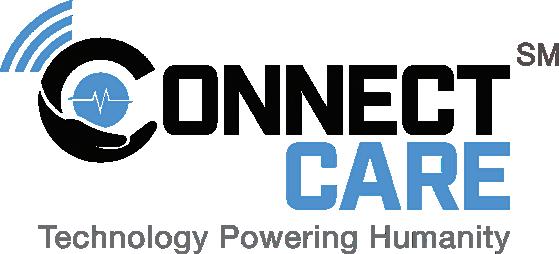
We are pleased to announce that now monitors 50 plus hospitals Ontario region.
We are pleased to announce that now monitors 100 plus hospitals Ontario region.
Labour Canada has fully “acknowledged” the scope of work provided in the semiannual inspection program. In addition, the written documentation contributes greatly to the hospital accreditation programs.
Labour Canada has “acknowledged” the scope work provided in the semiannual inspection program. In addition, the written documentation contributes greatly to the hospital accreditation programs.
Further we are always pooling the knowledge resources of Infection Control and Engineering Groups like CHES, the ventilation inspection program is in a evolution to meet future healthcare needs for patients and staff.
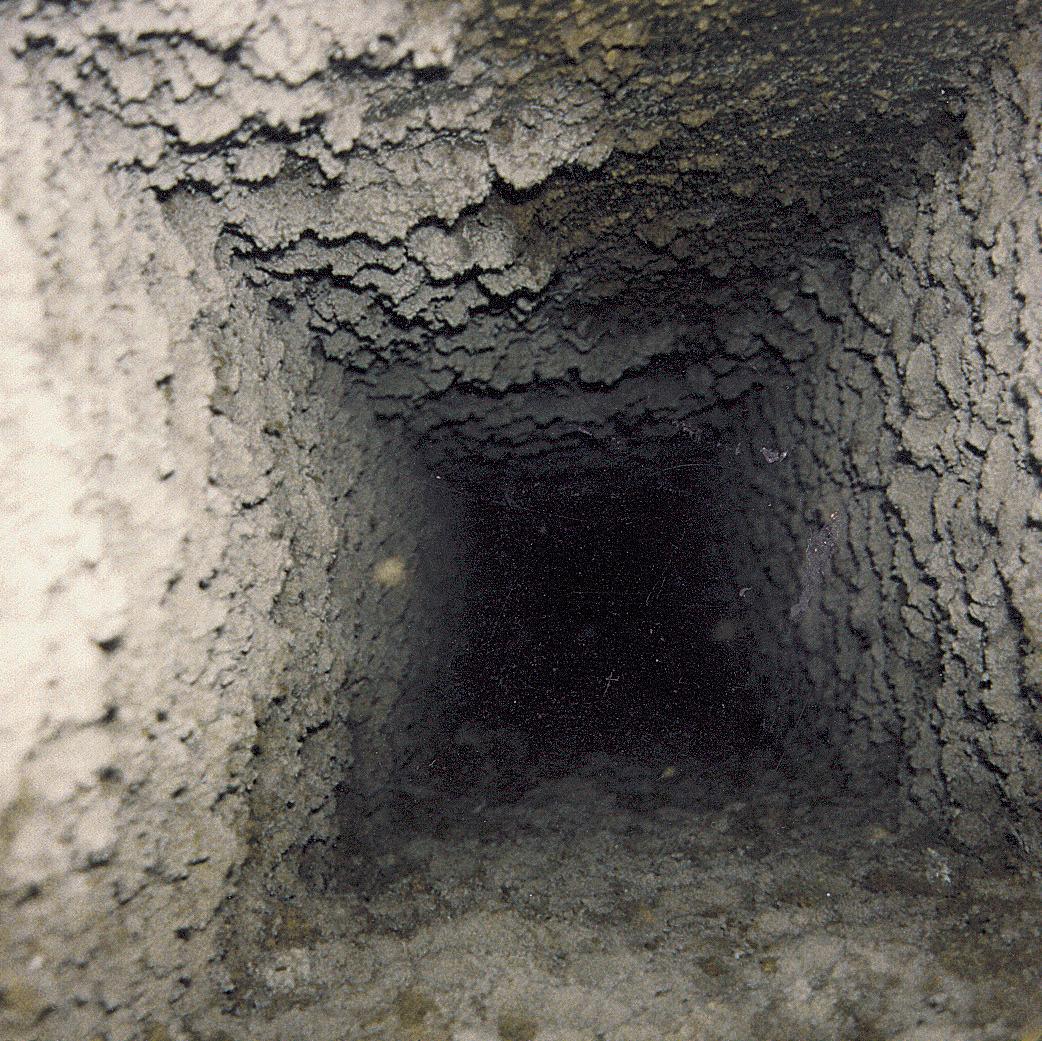


h l ti and inspection of the hospital building audit this year Some of u have already taken advantage f our new software program which in conjunction with our patented robotics, allows us to minimize ceiling access requirements.

Further we are always pooling the knowledge resources Infection Control and Engineering Groups like CHES, the v inspection program is in evolution to meet future healthcare patients and staff. and inspection of the hospital building audit this year. Some of u have already taken advantage f our new software program which in conjunction with our patented robotics, allows us to minimize ceiling access requirements.
“Setting
ventilation fire dampers may be part of



